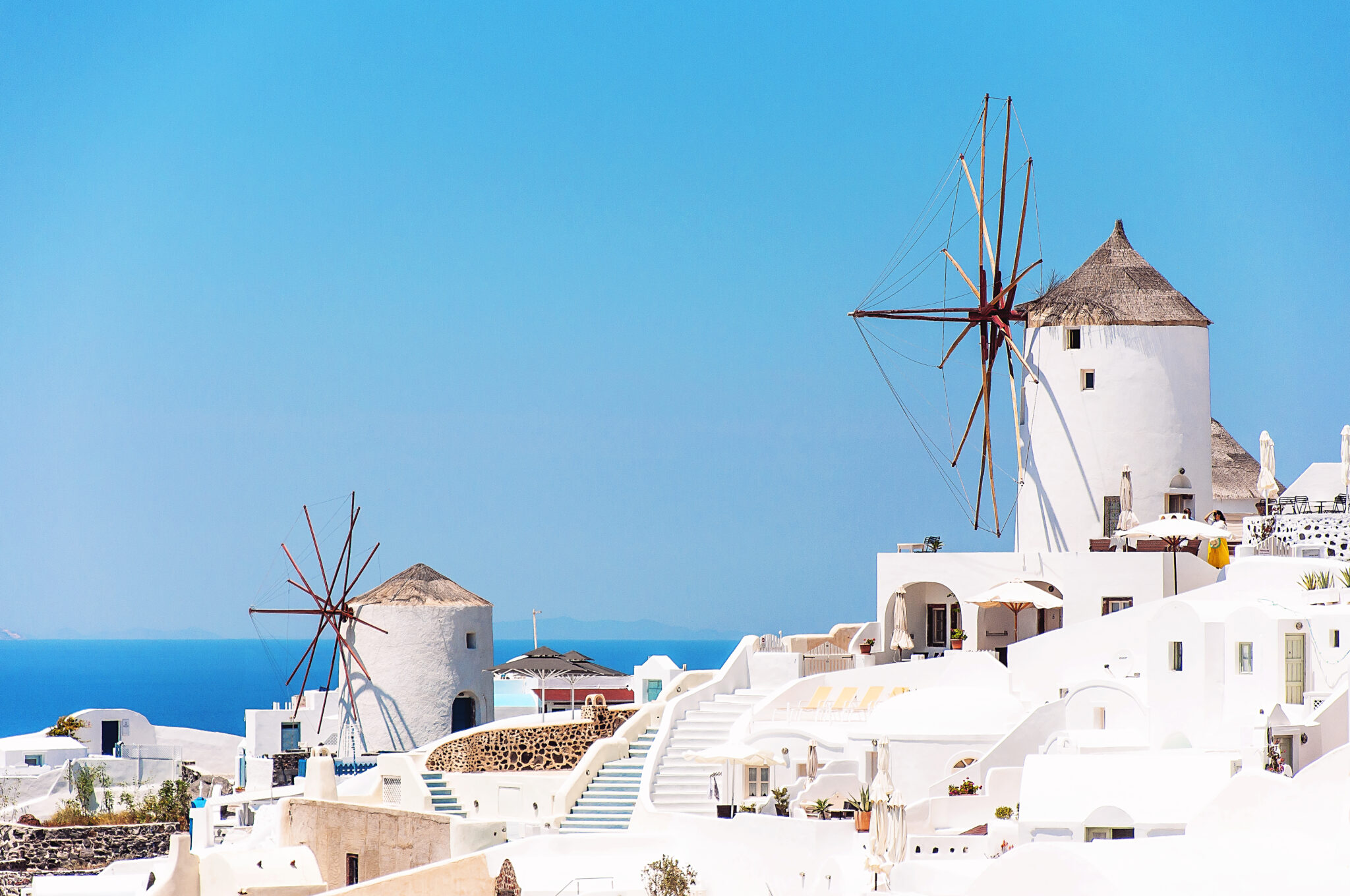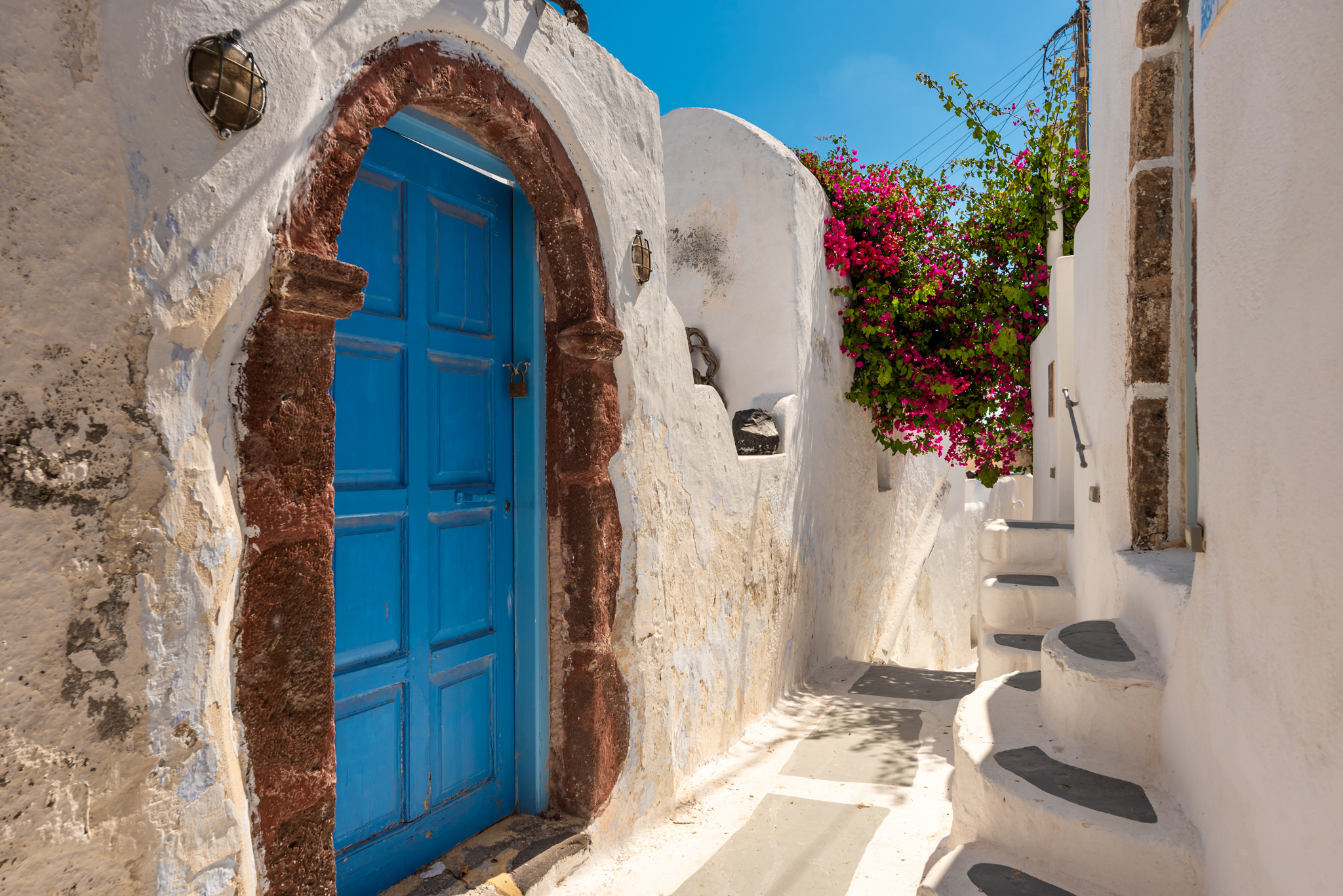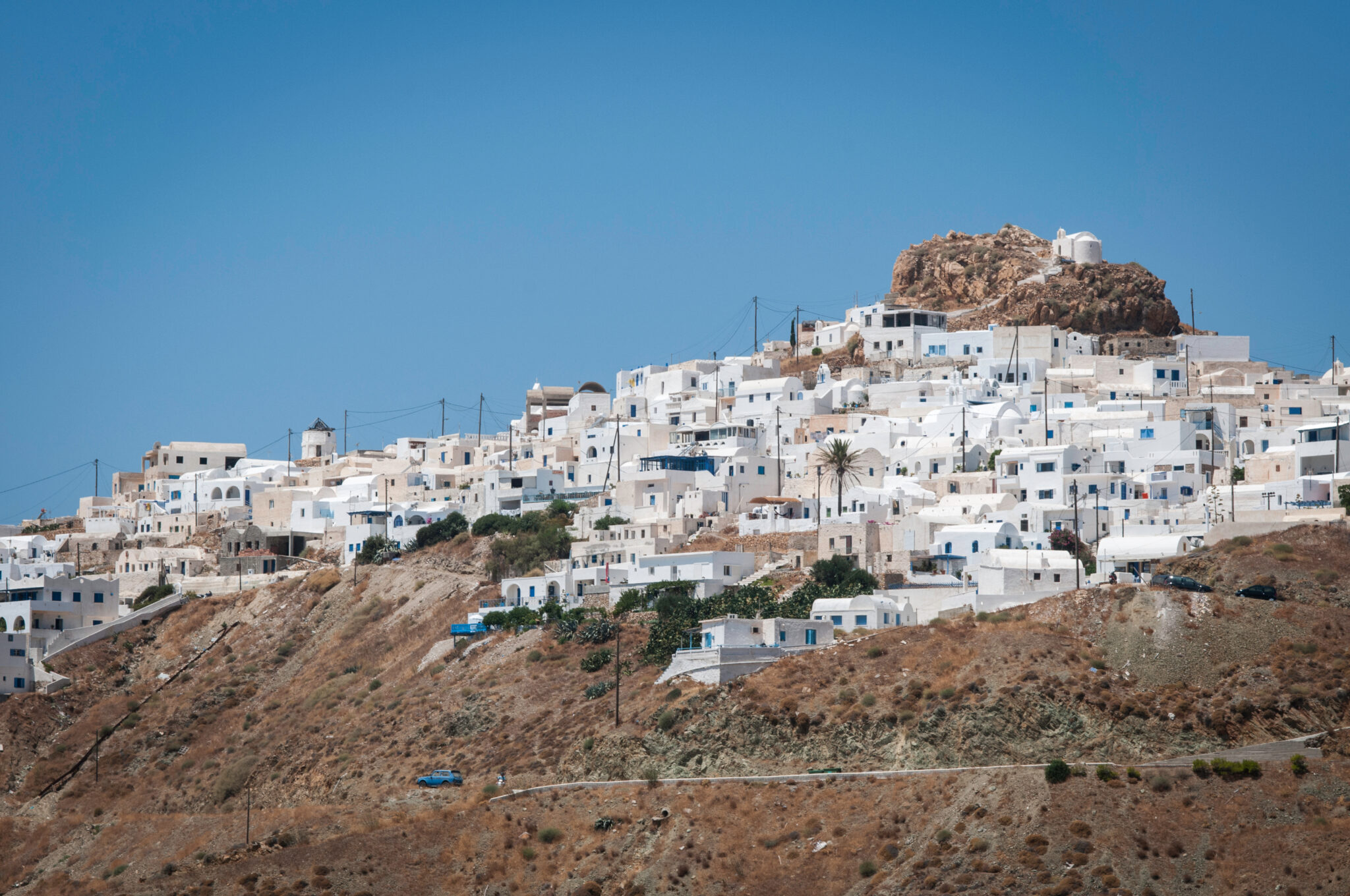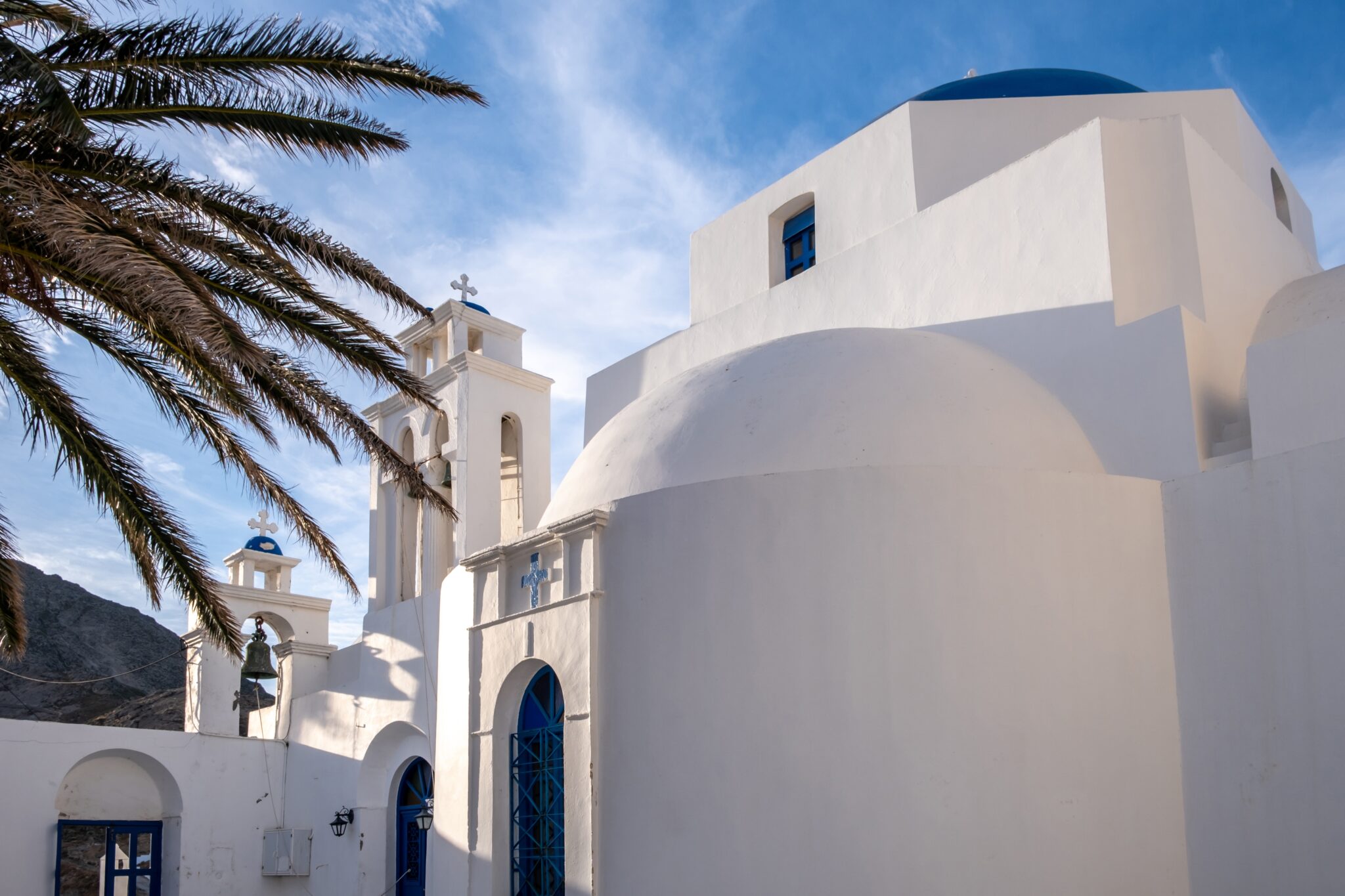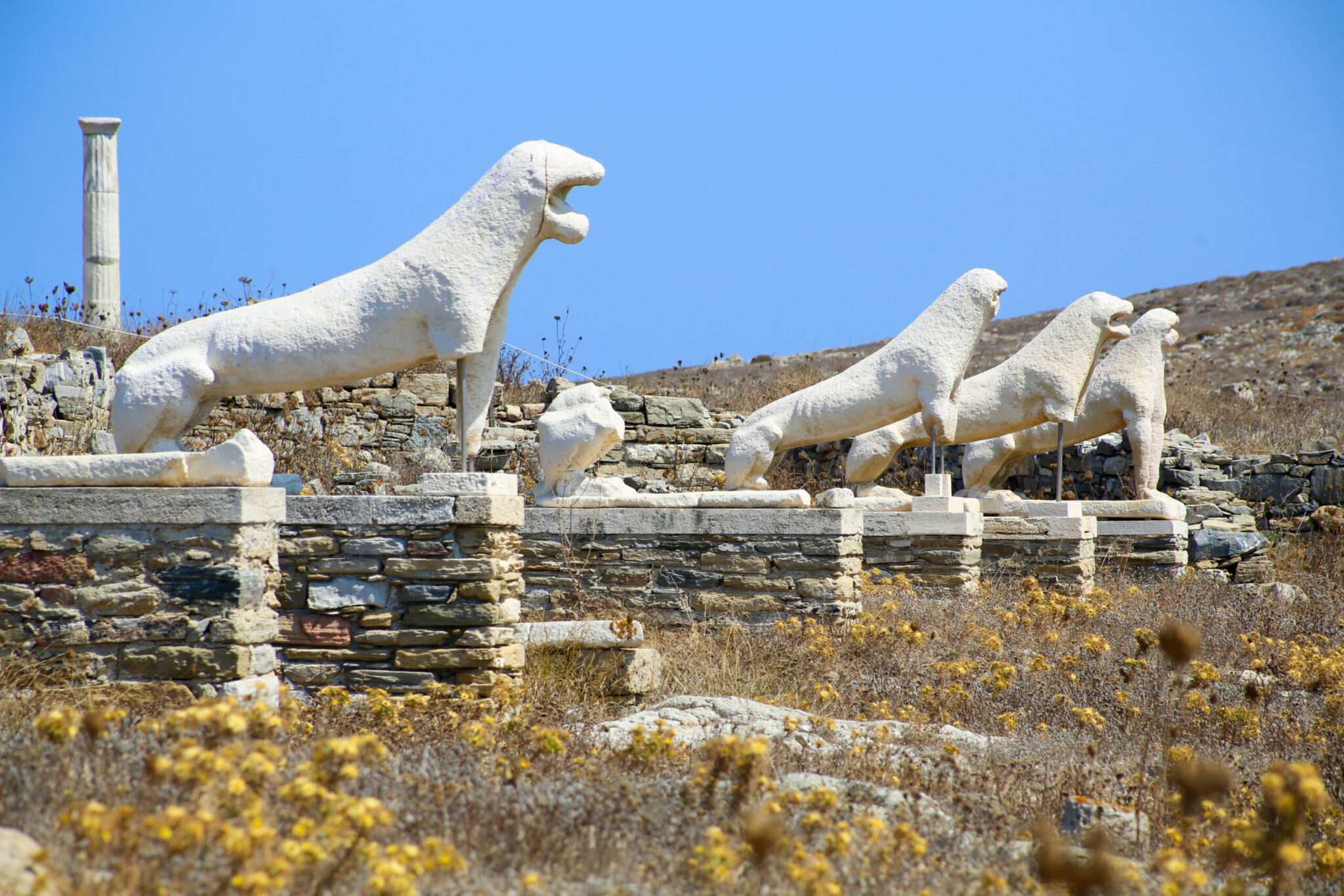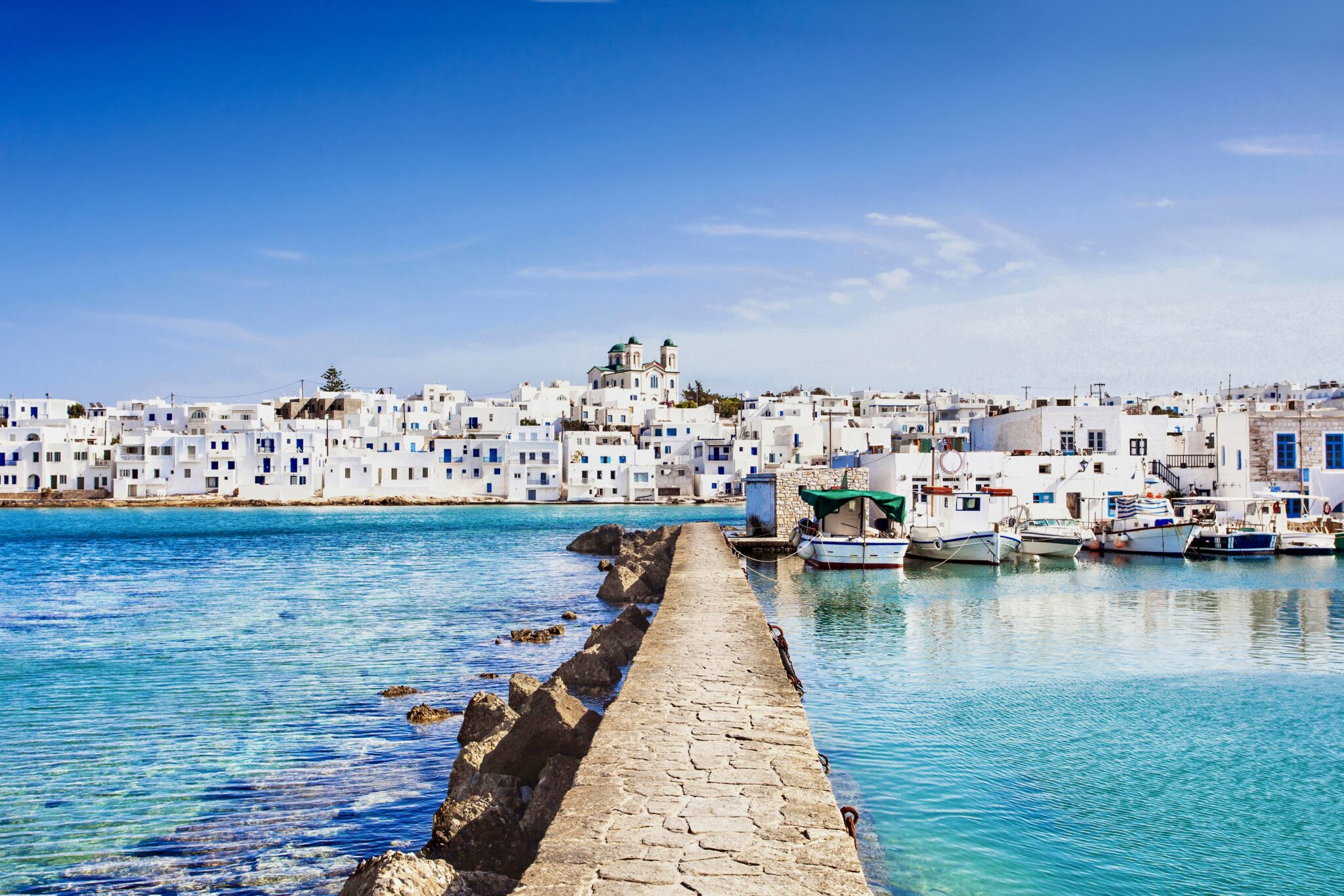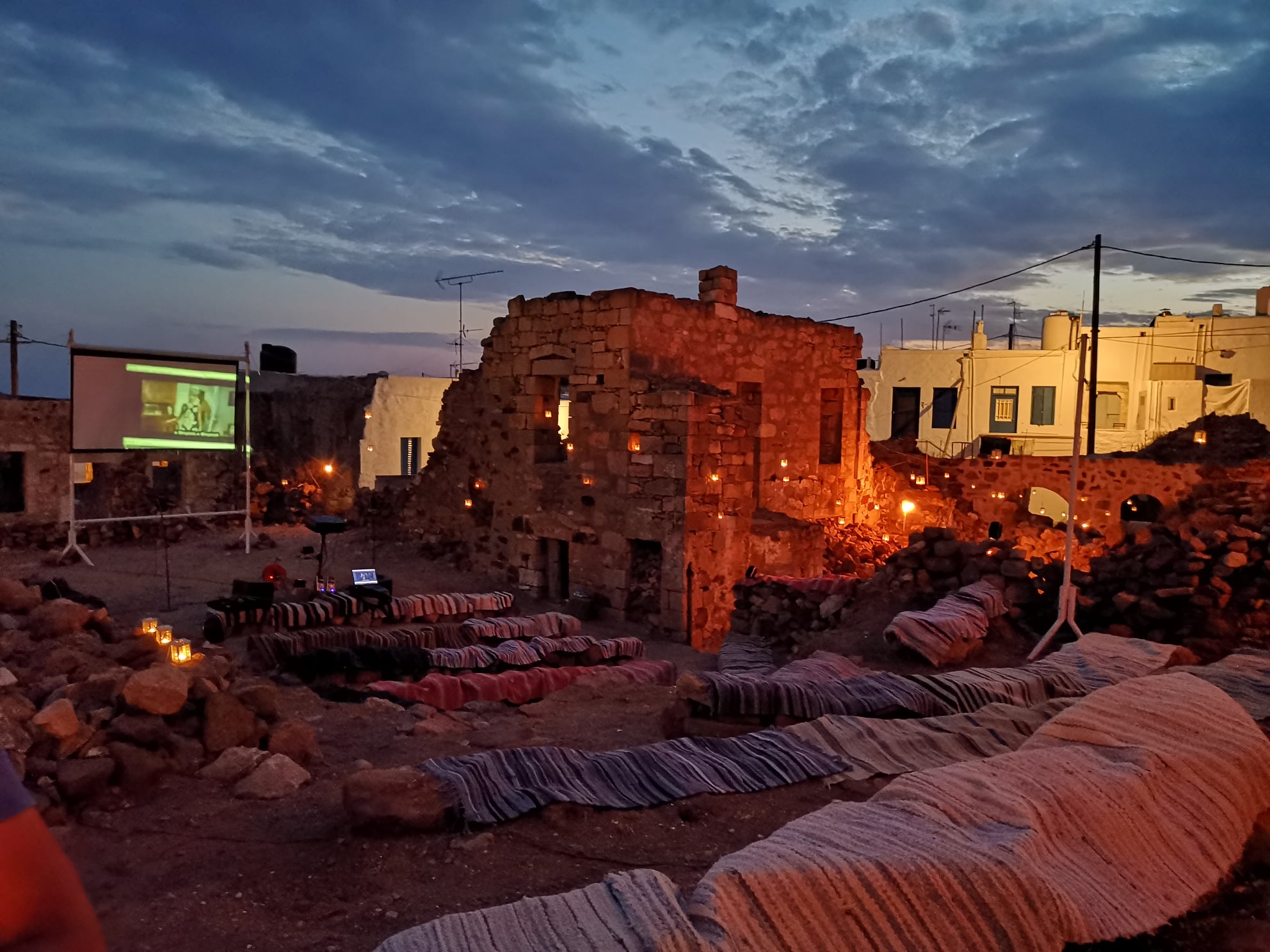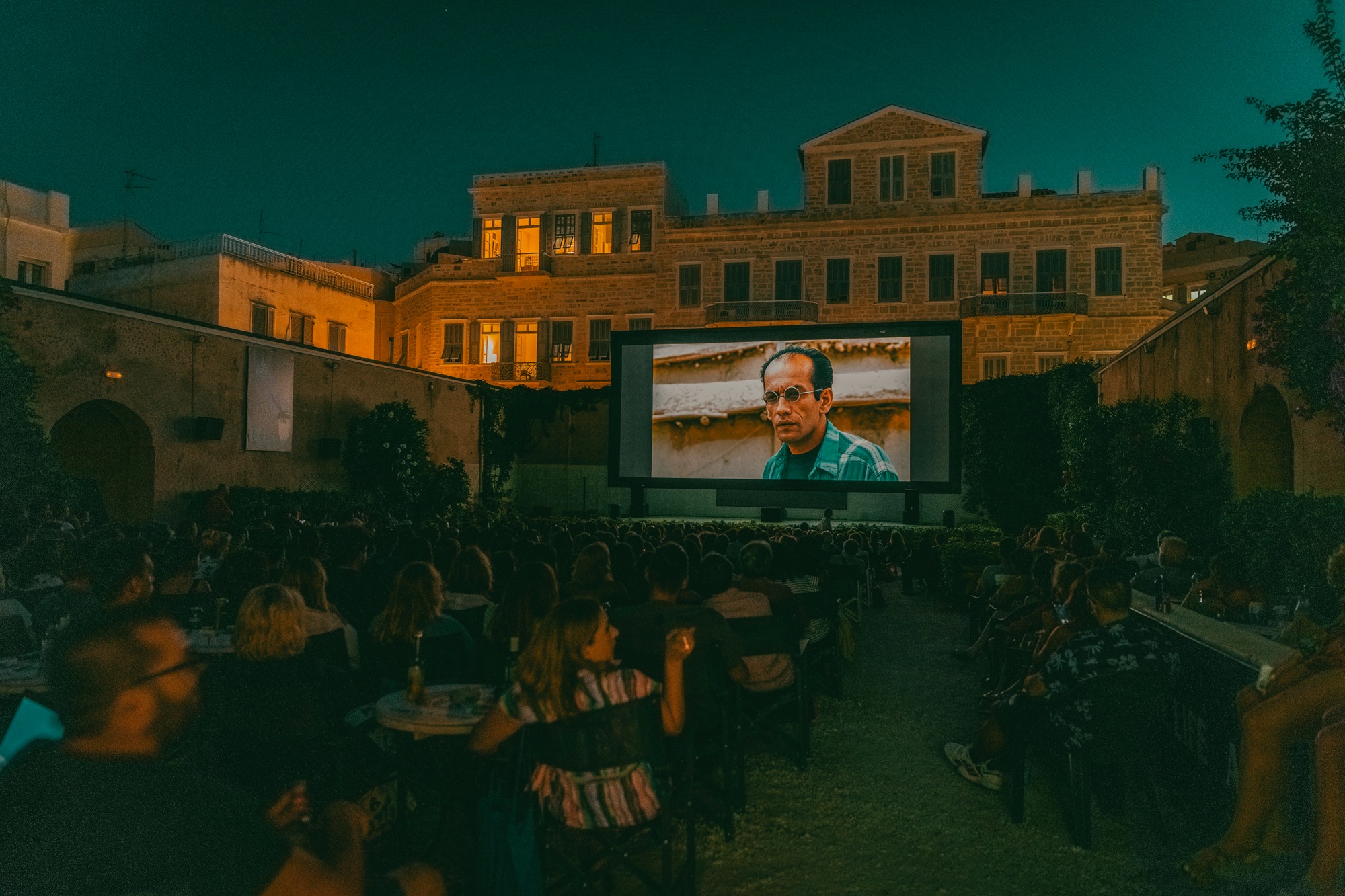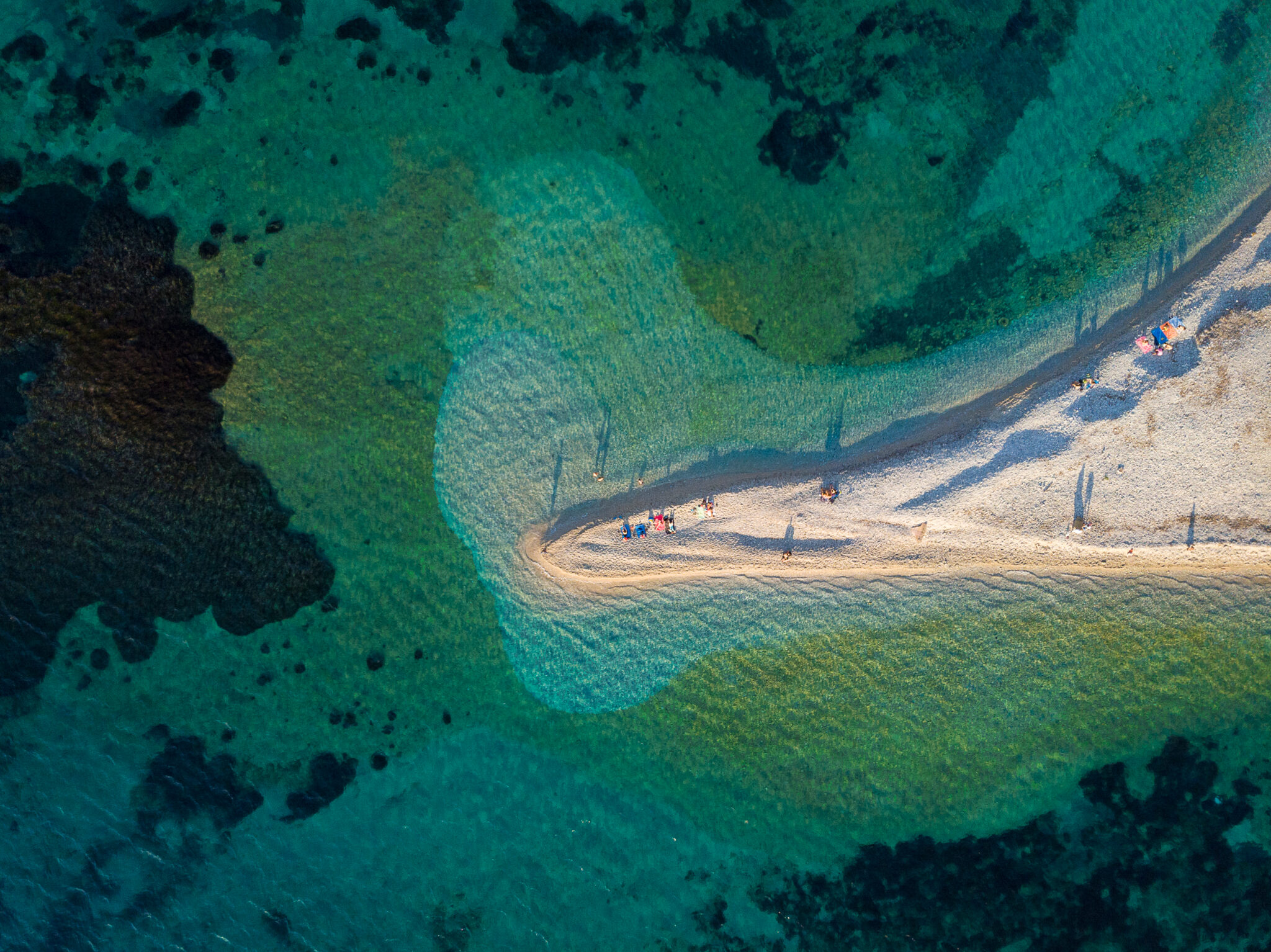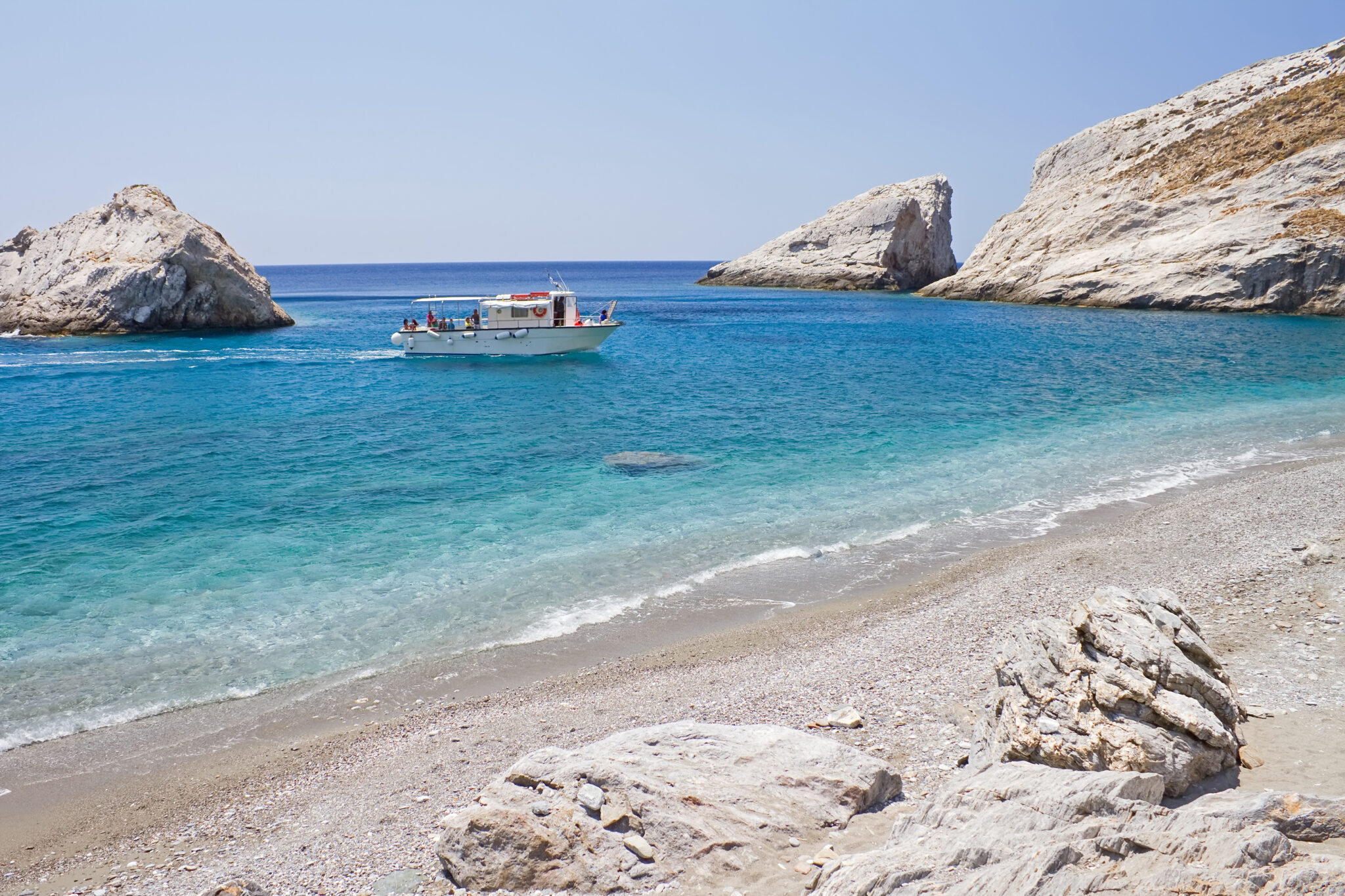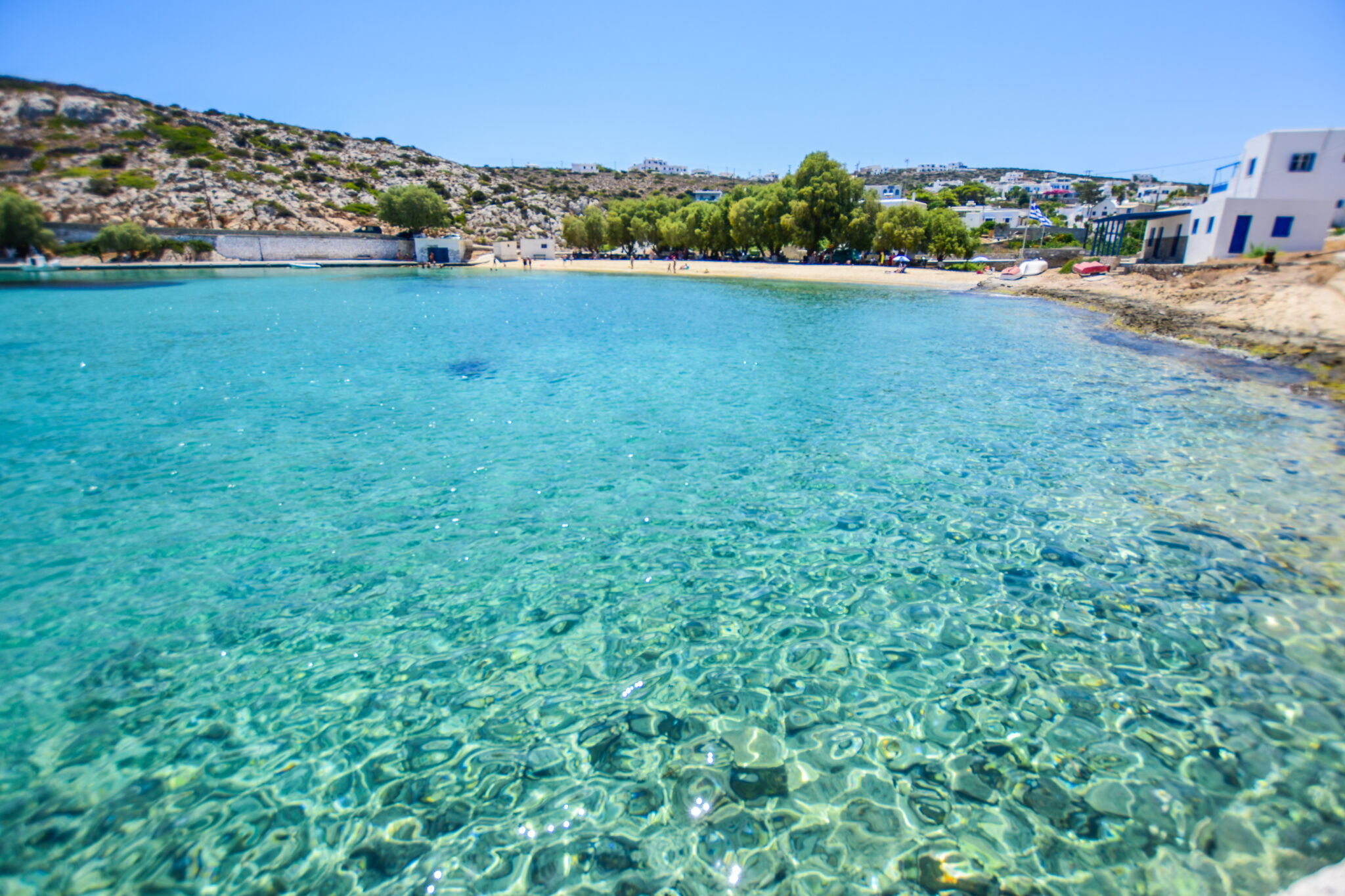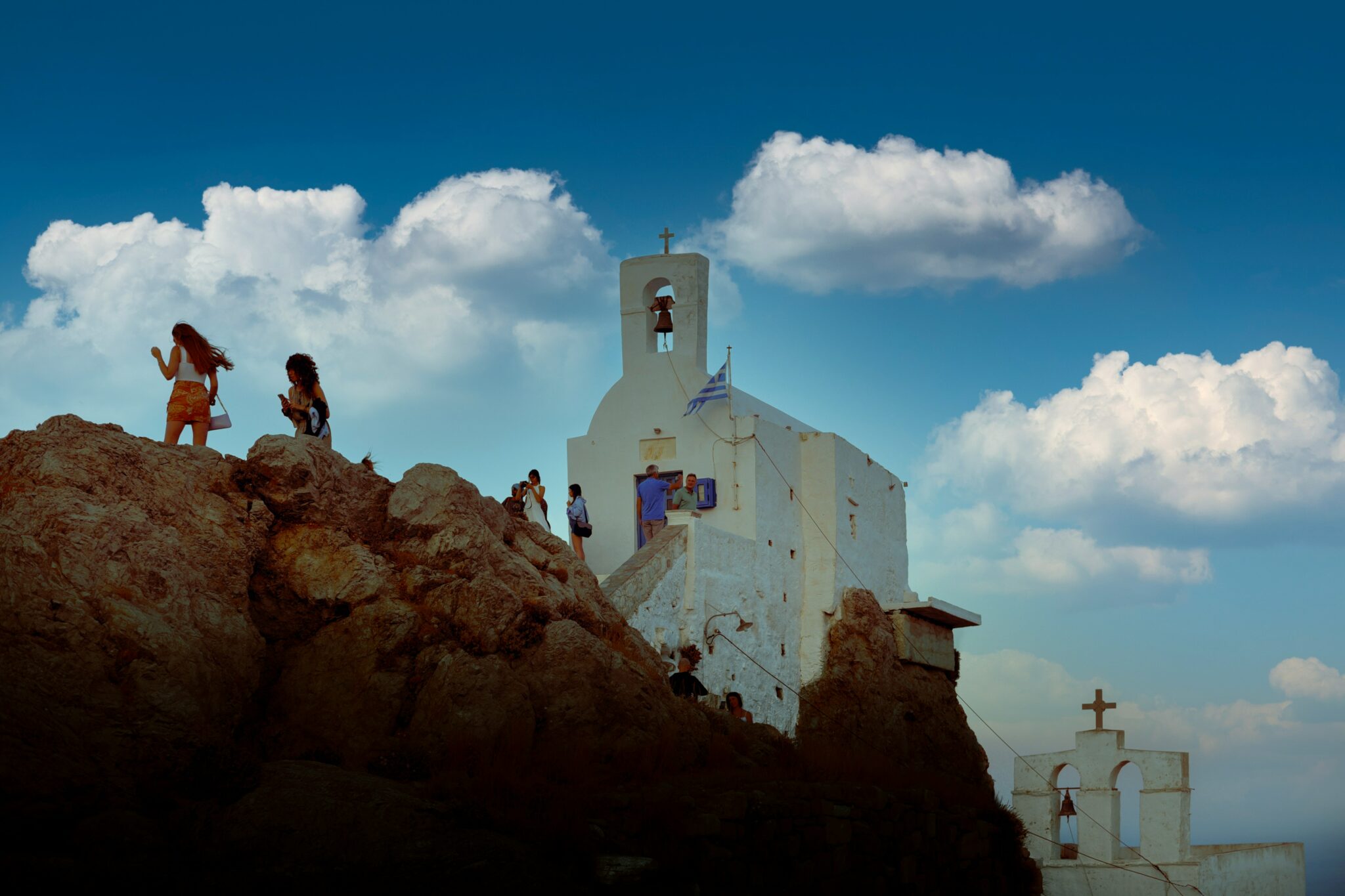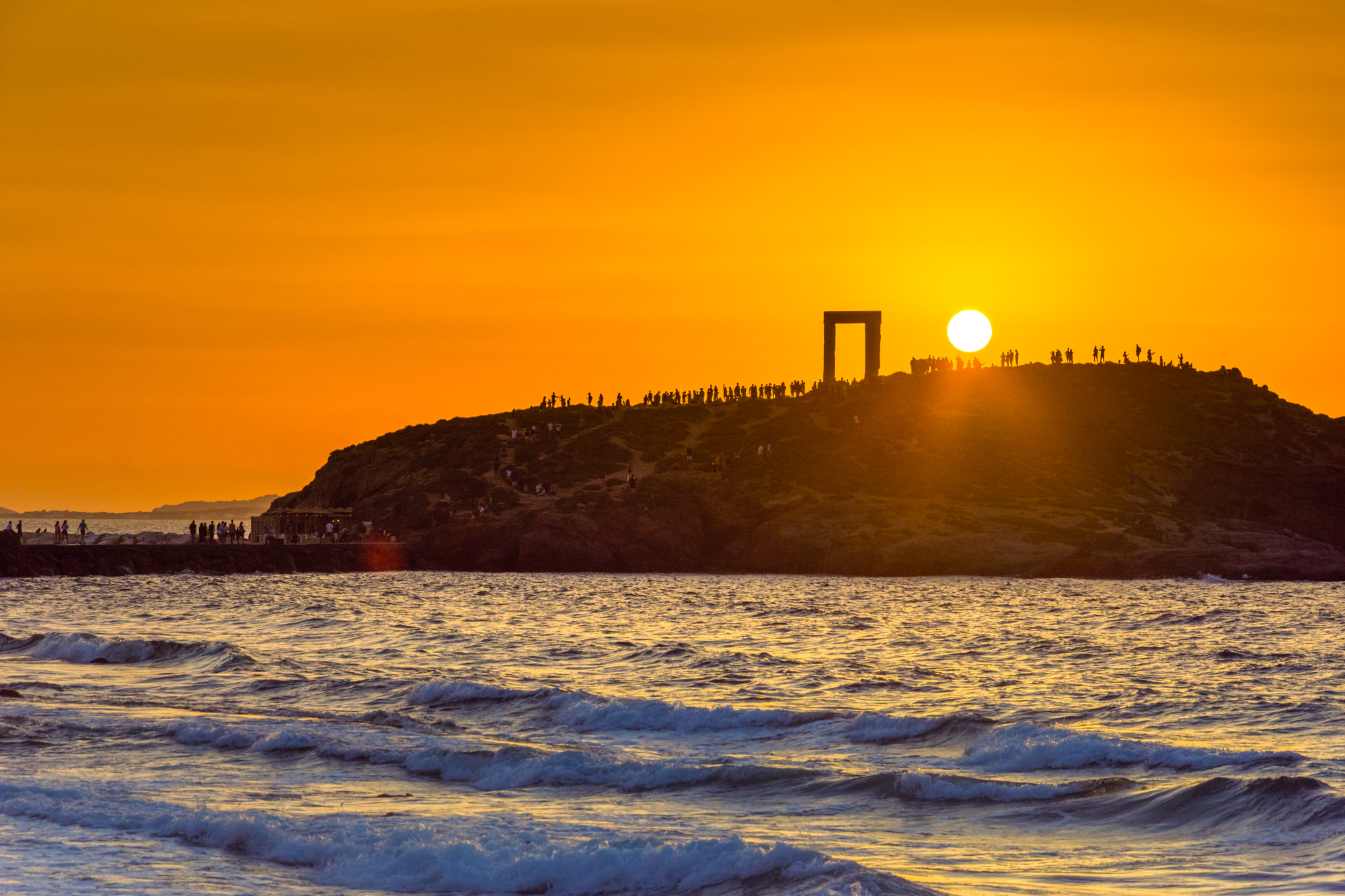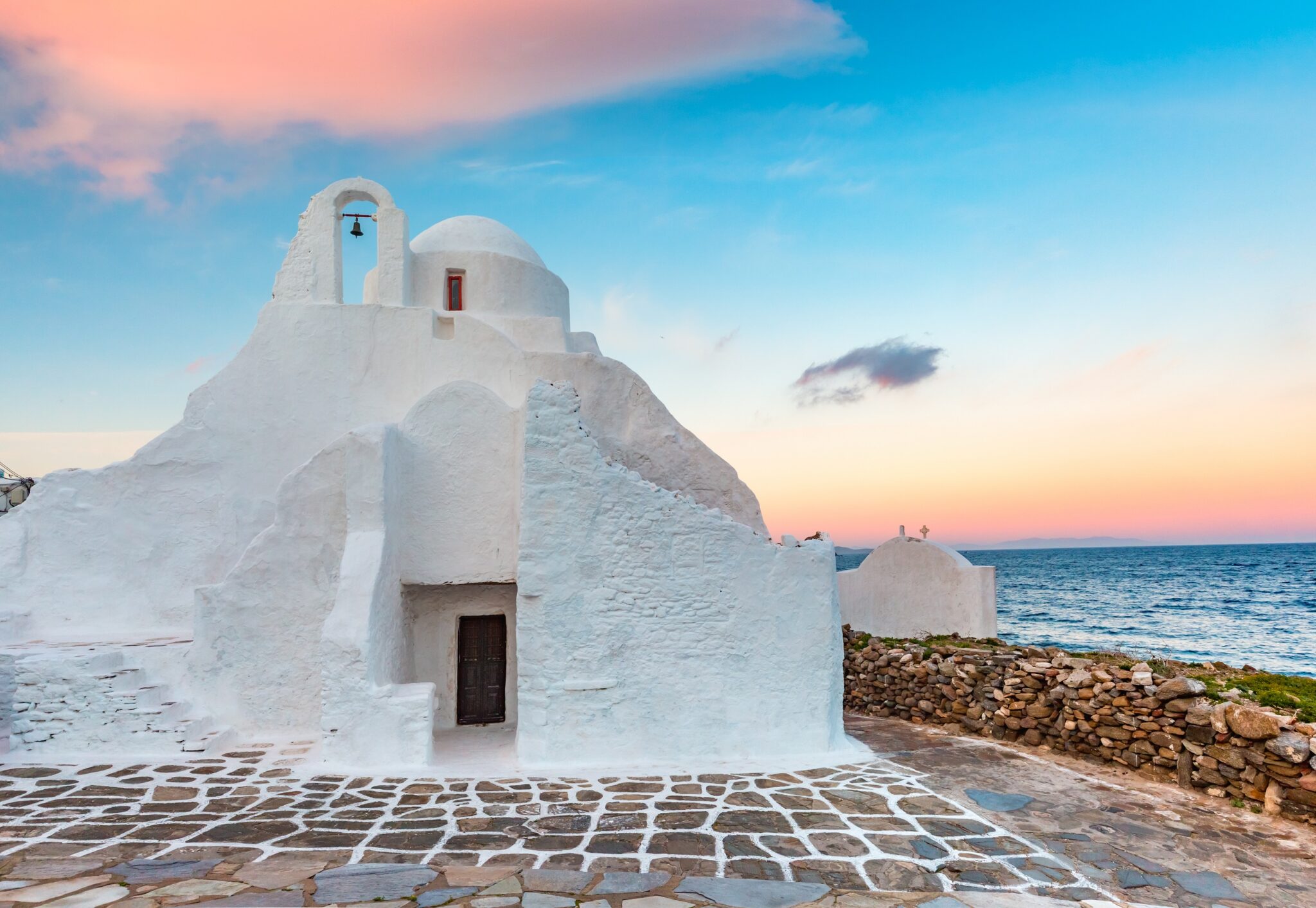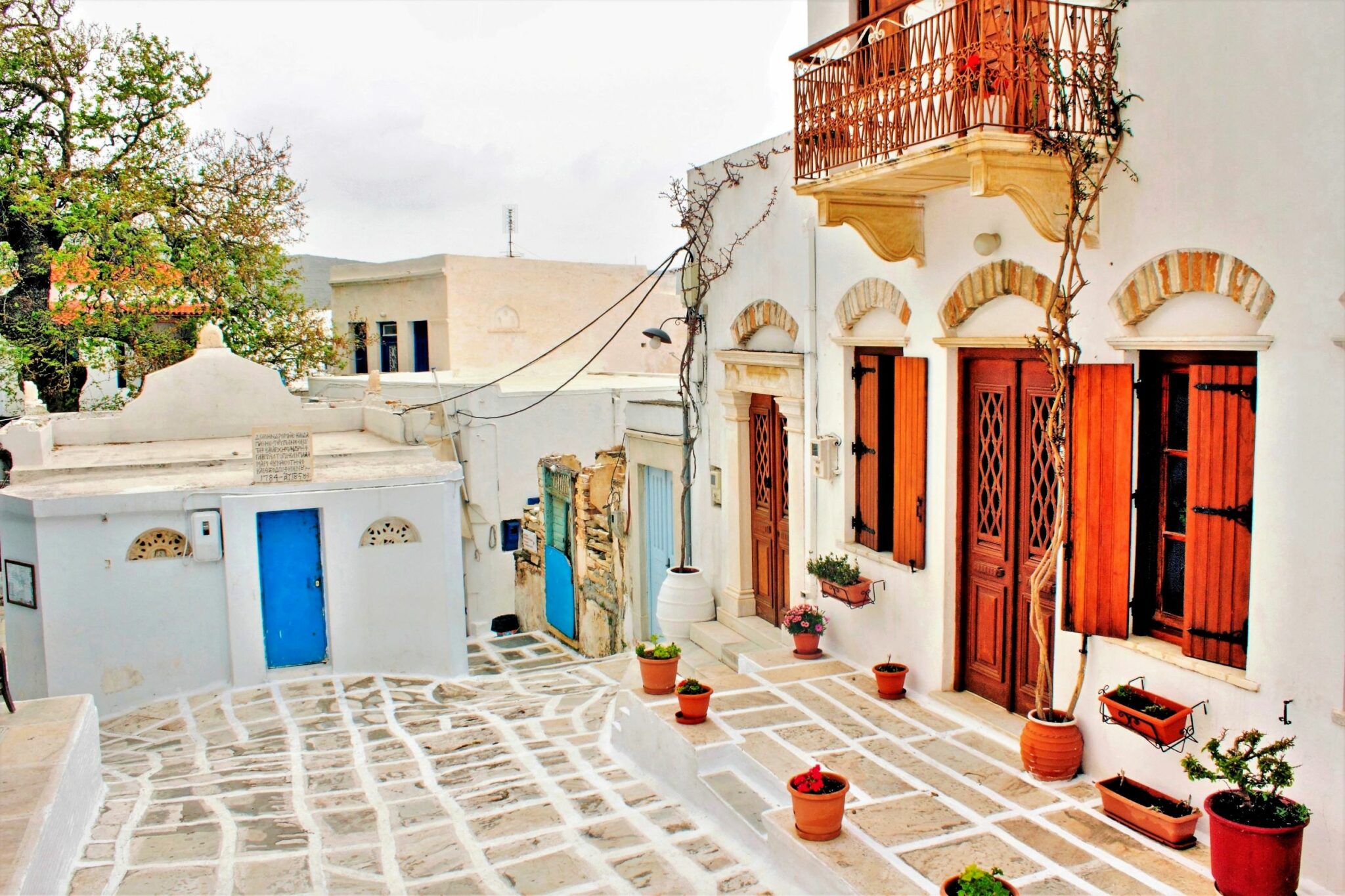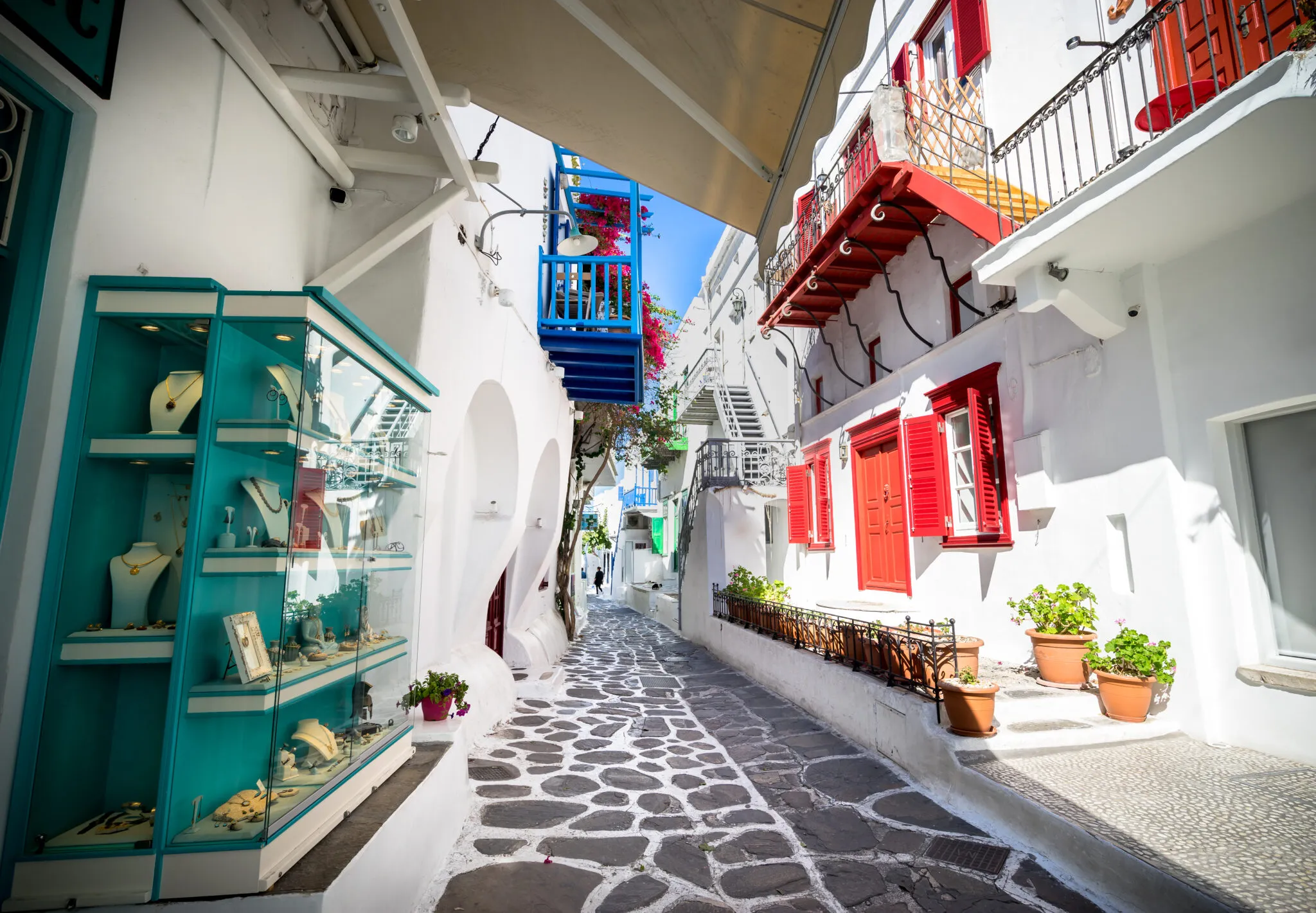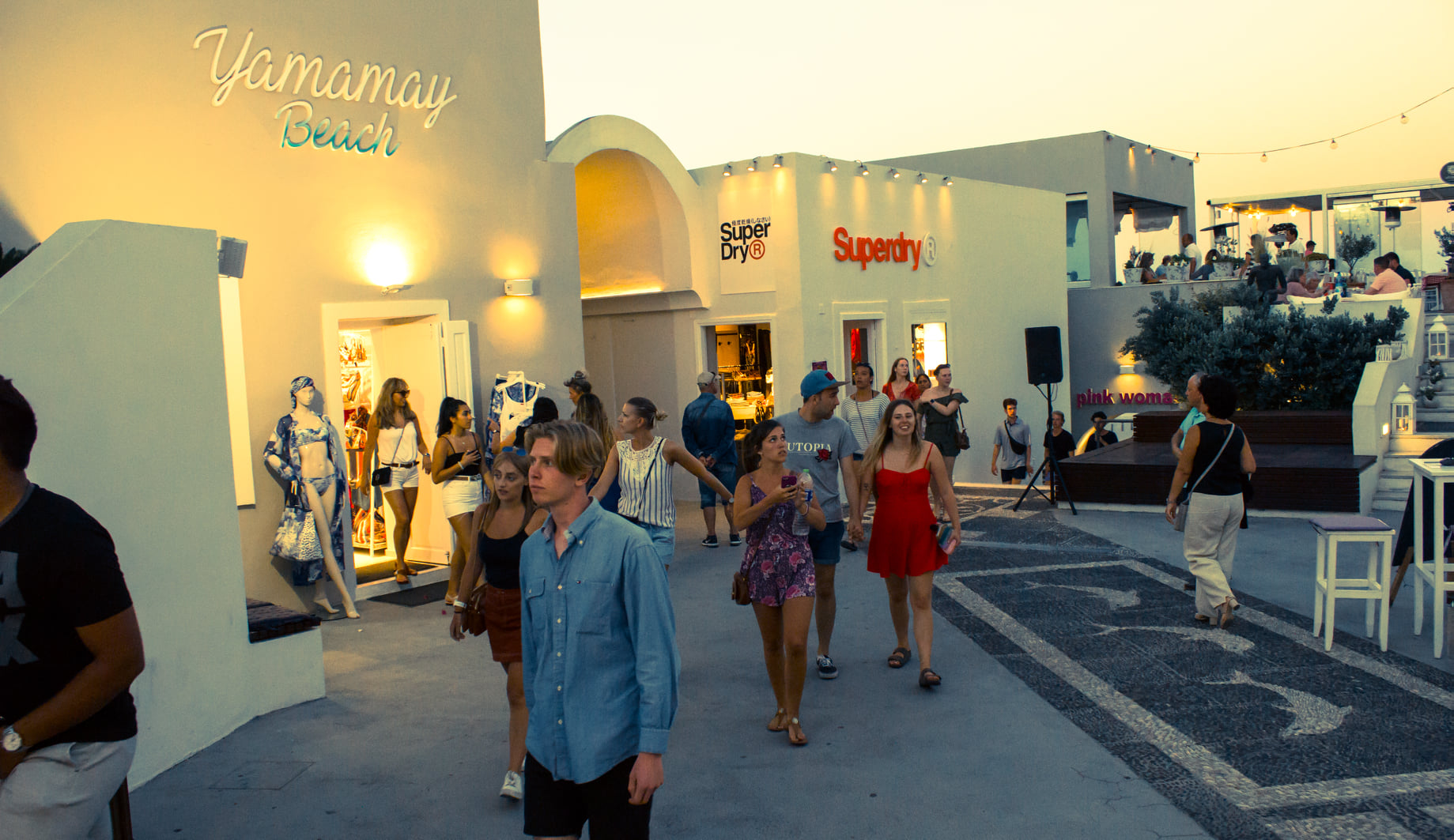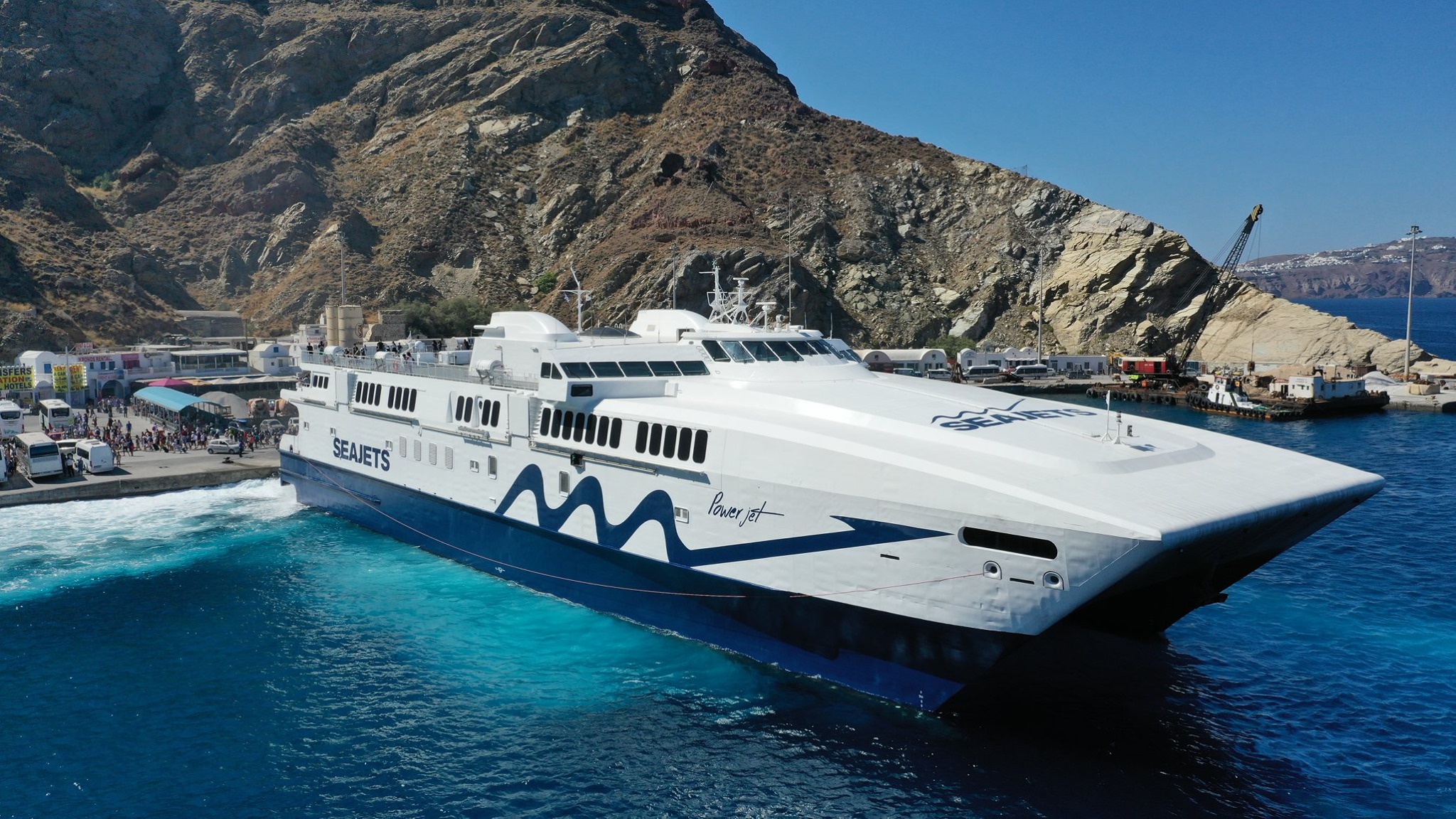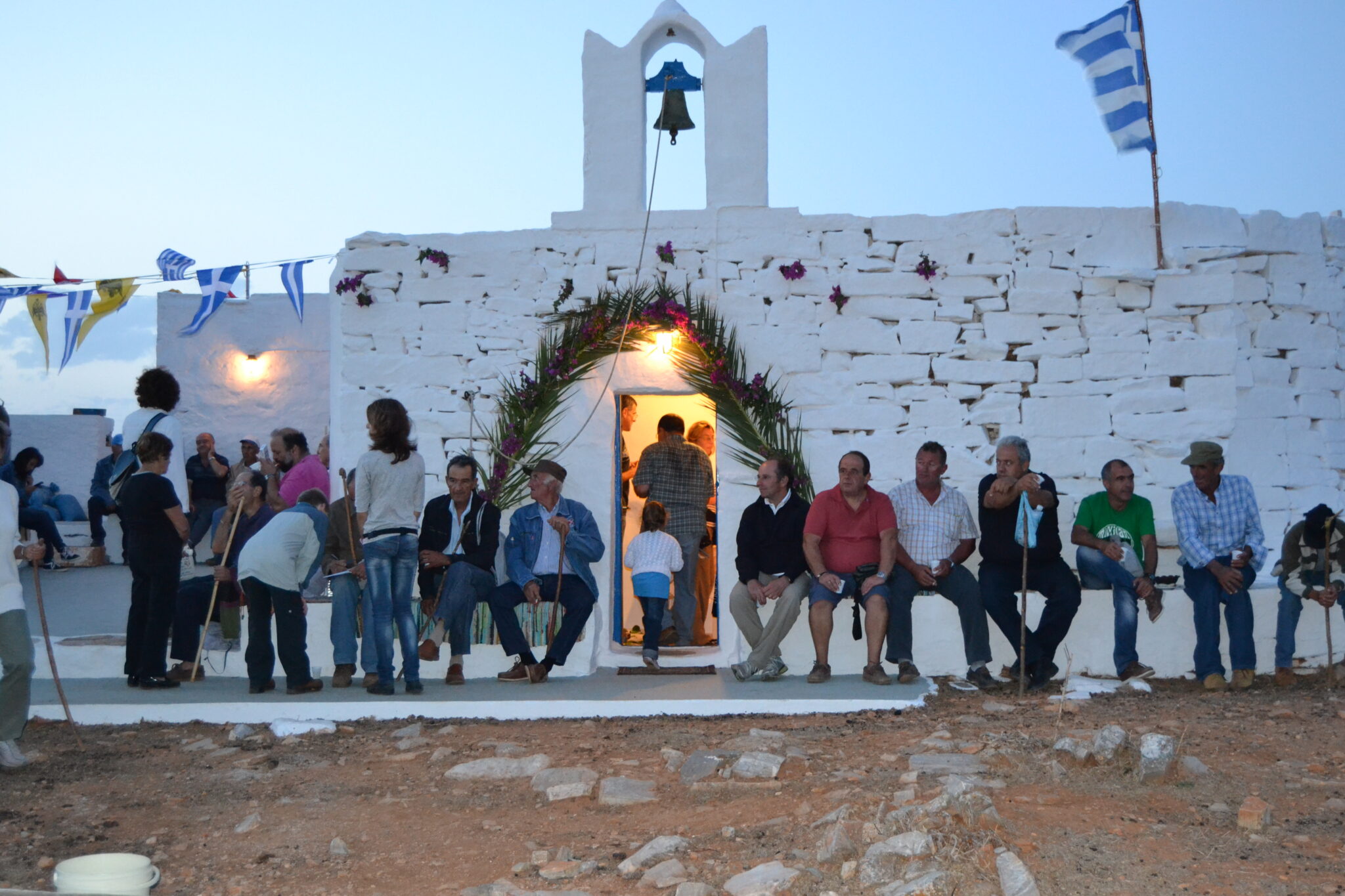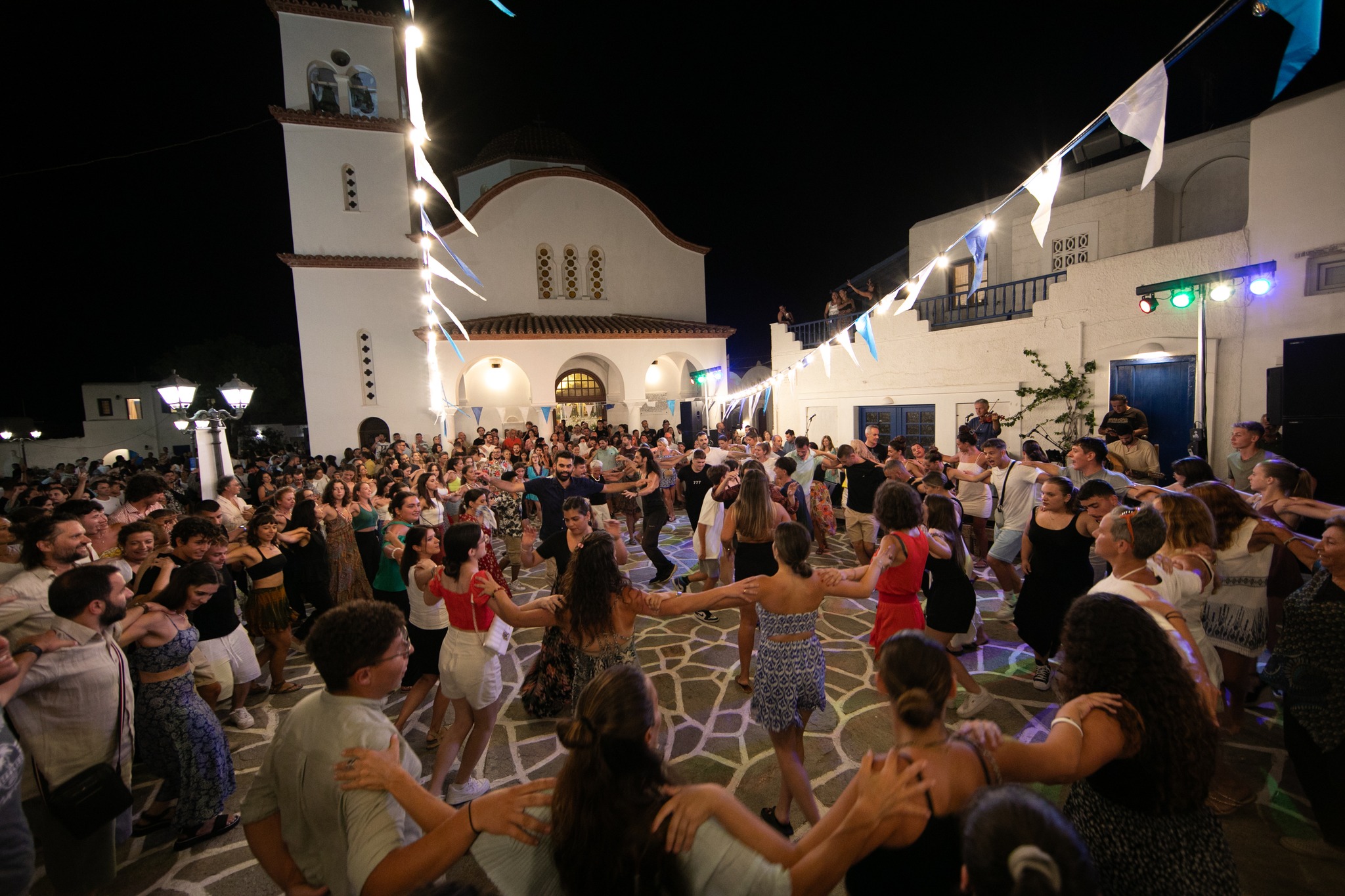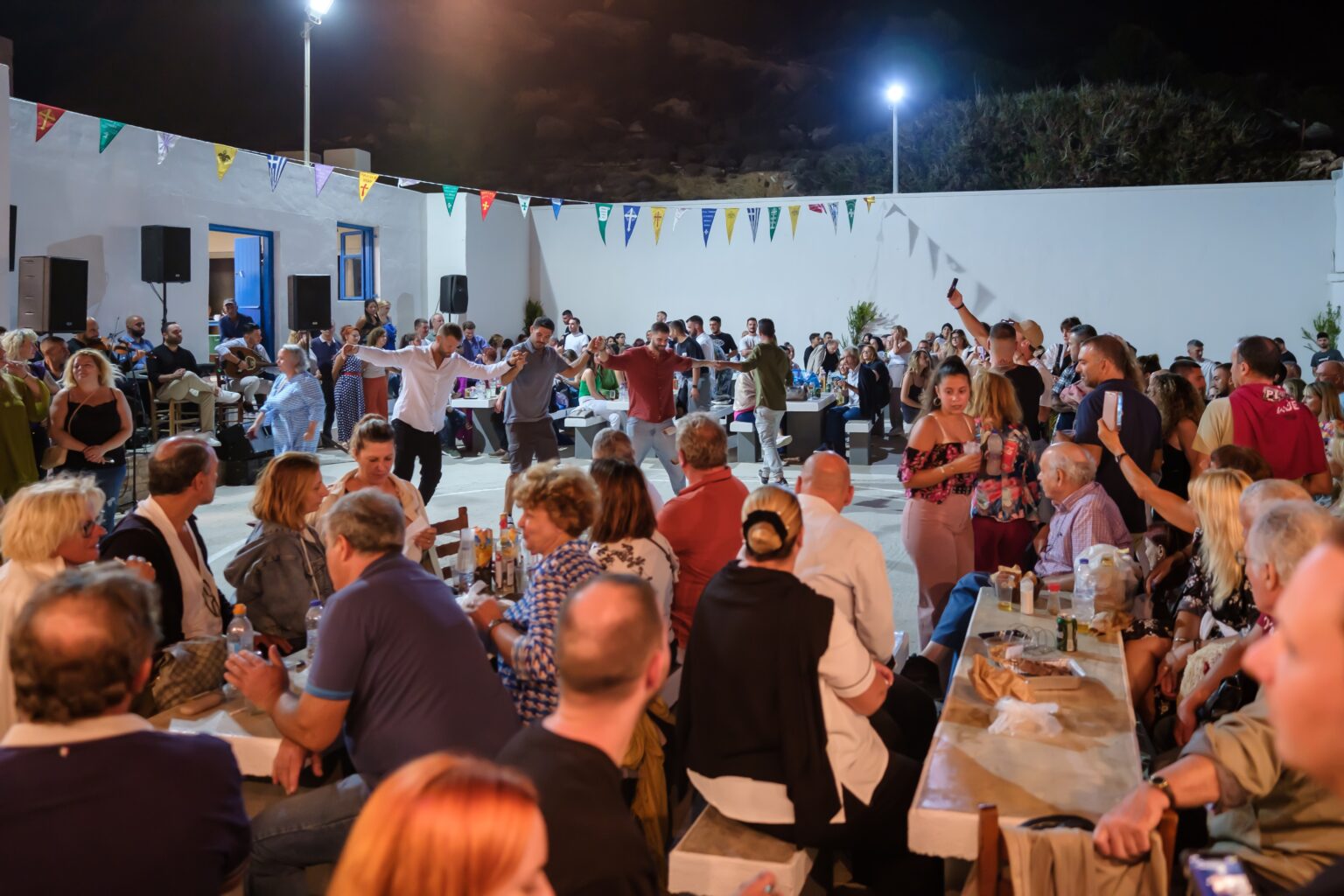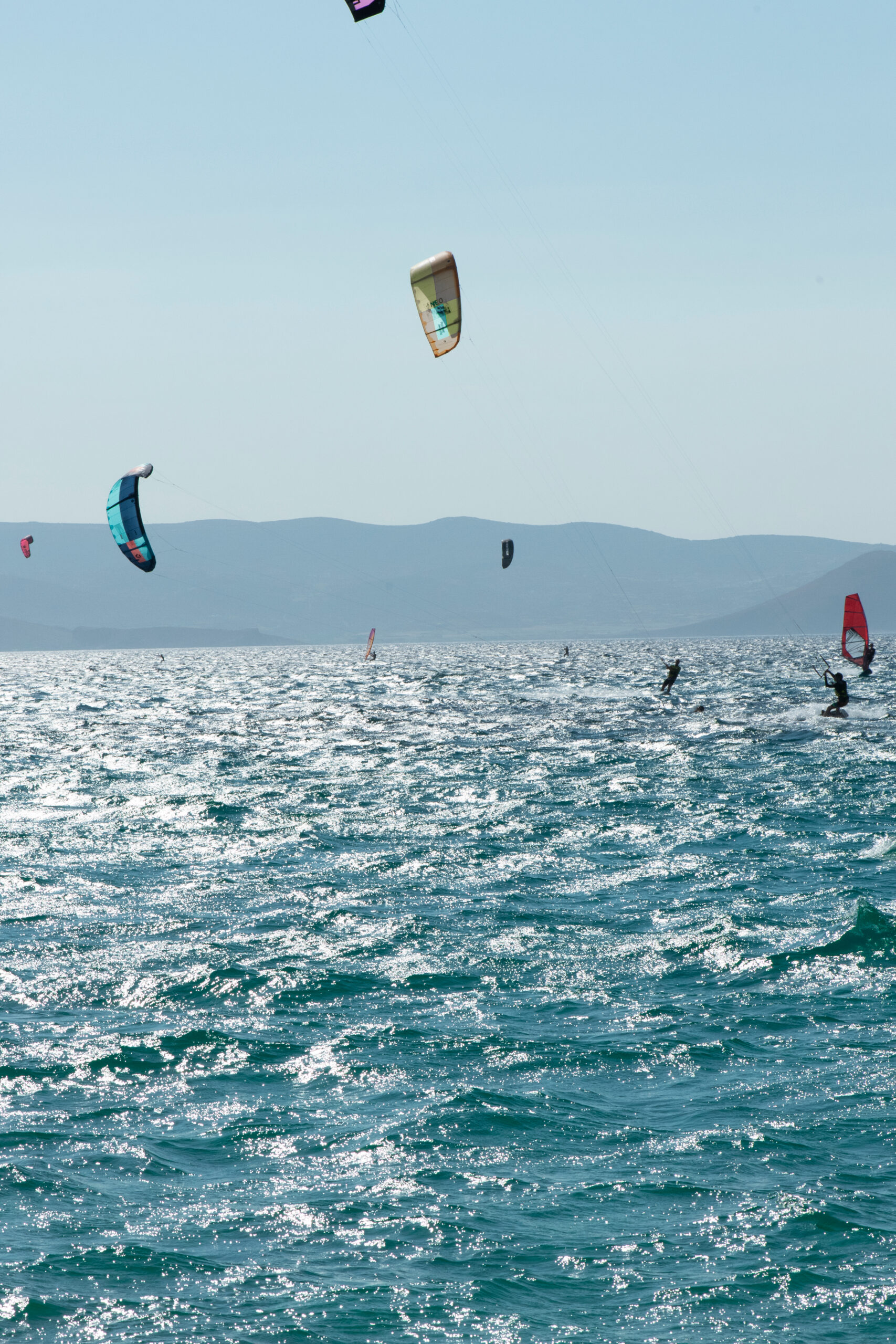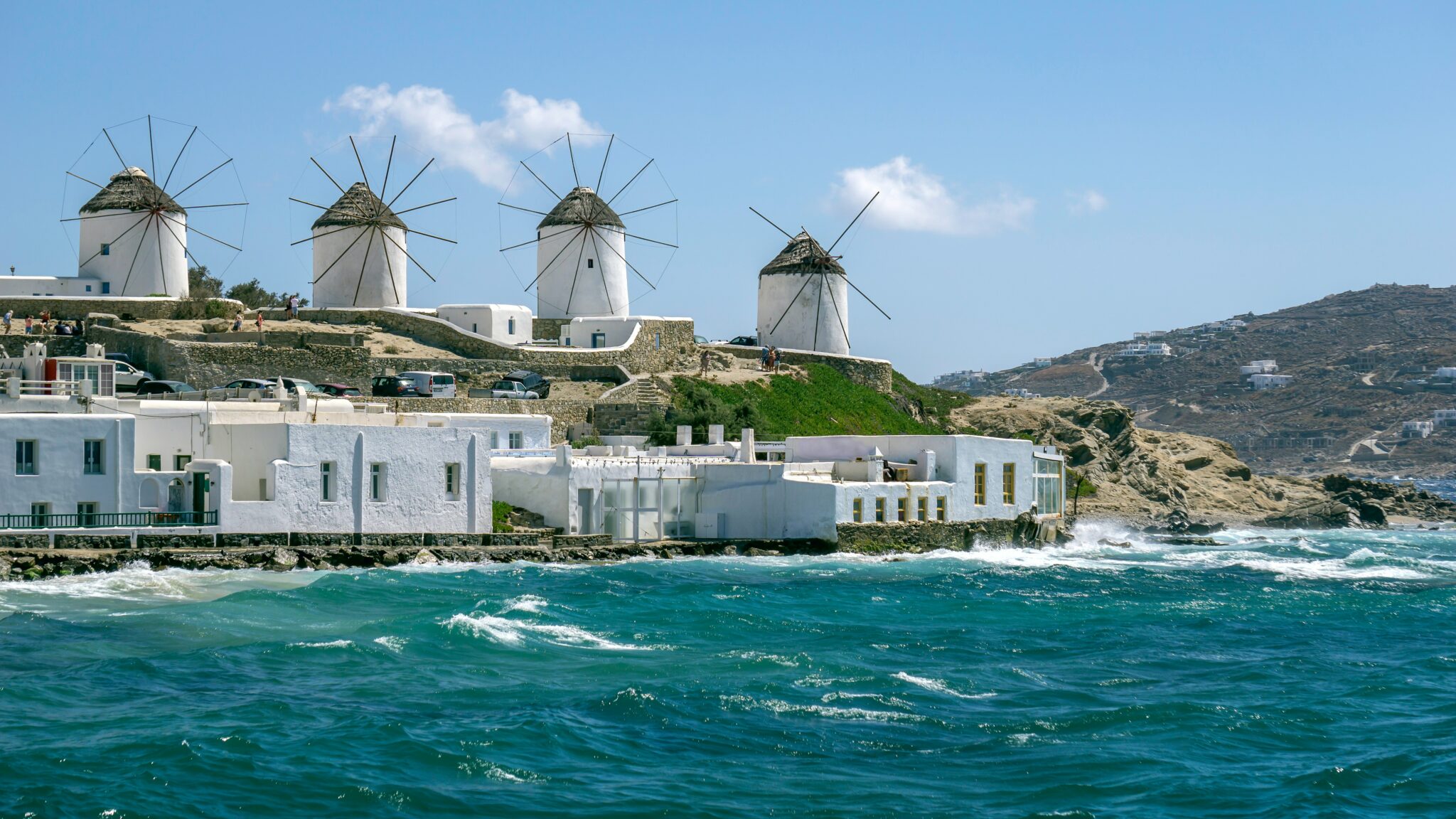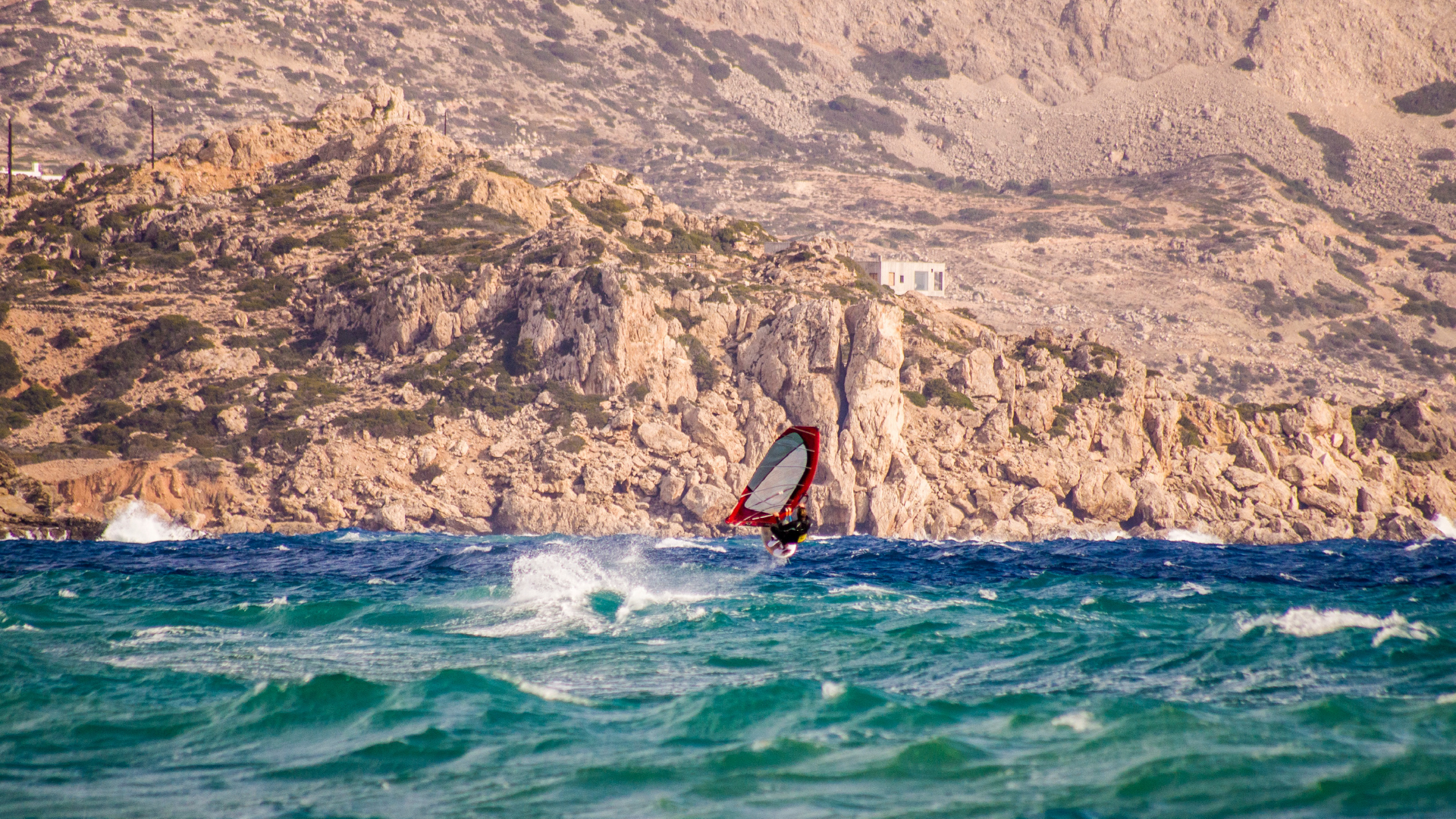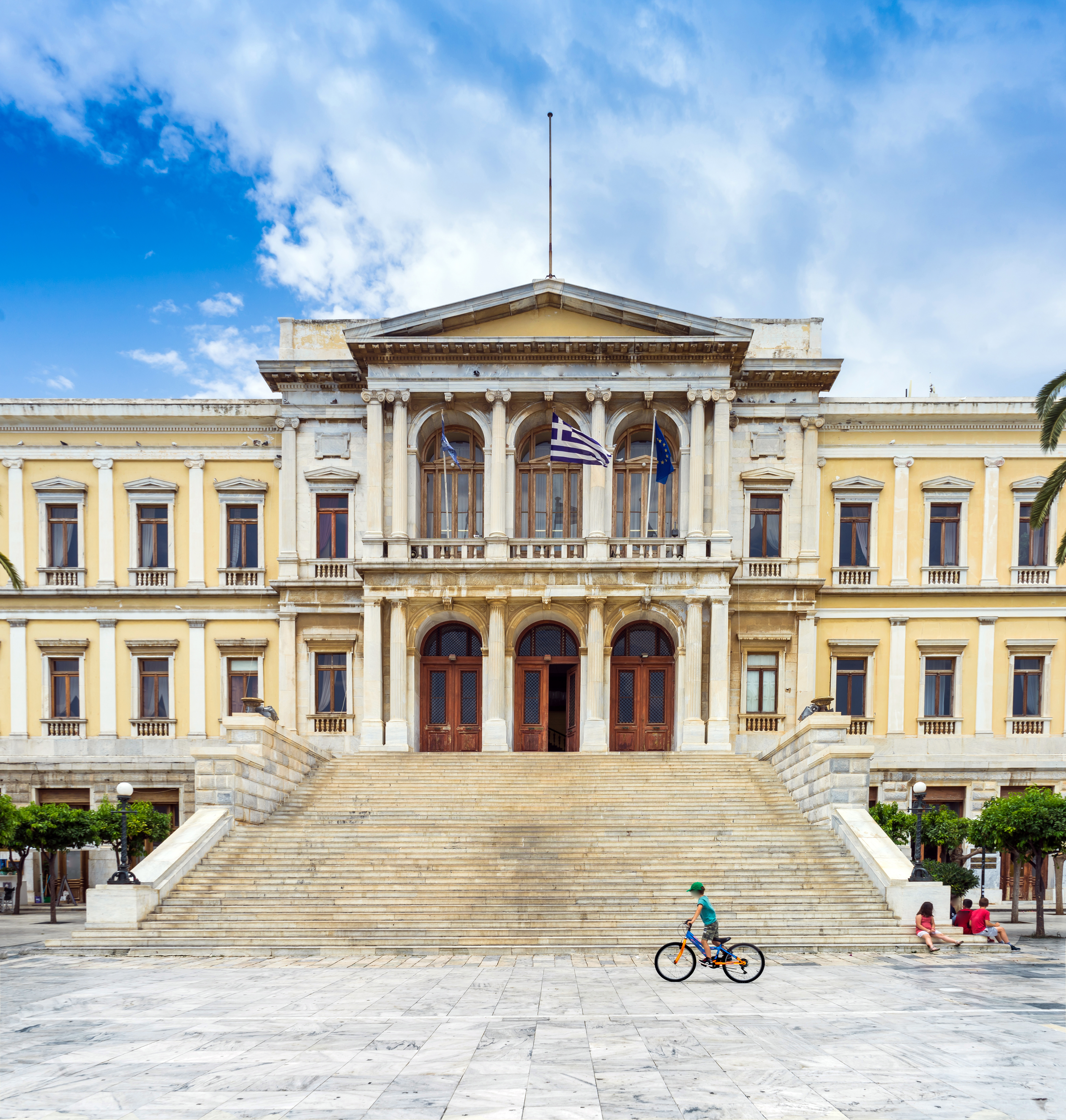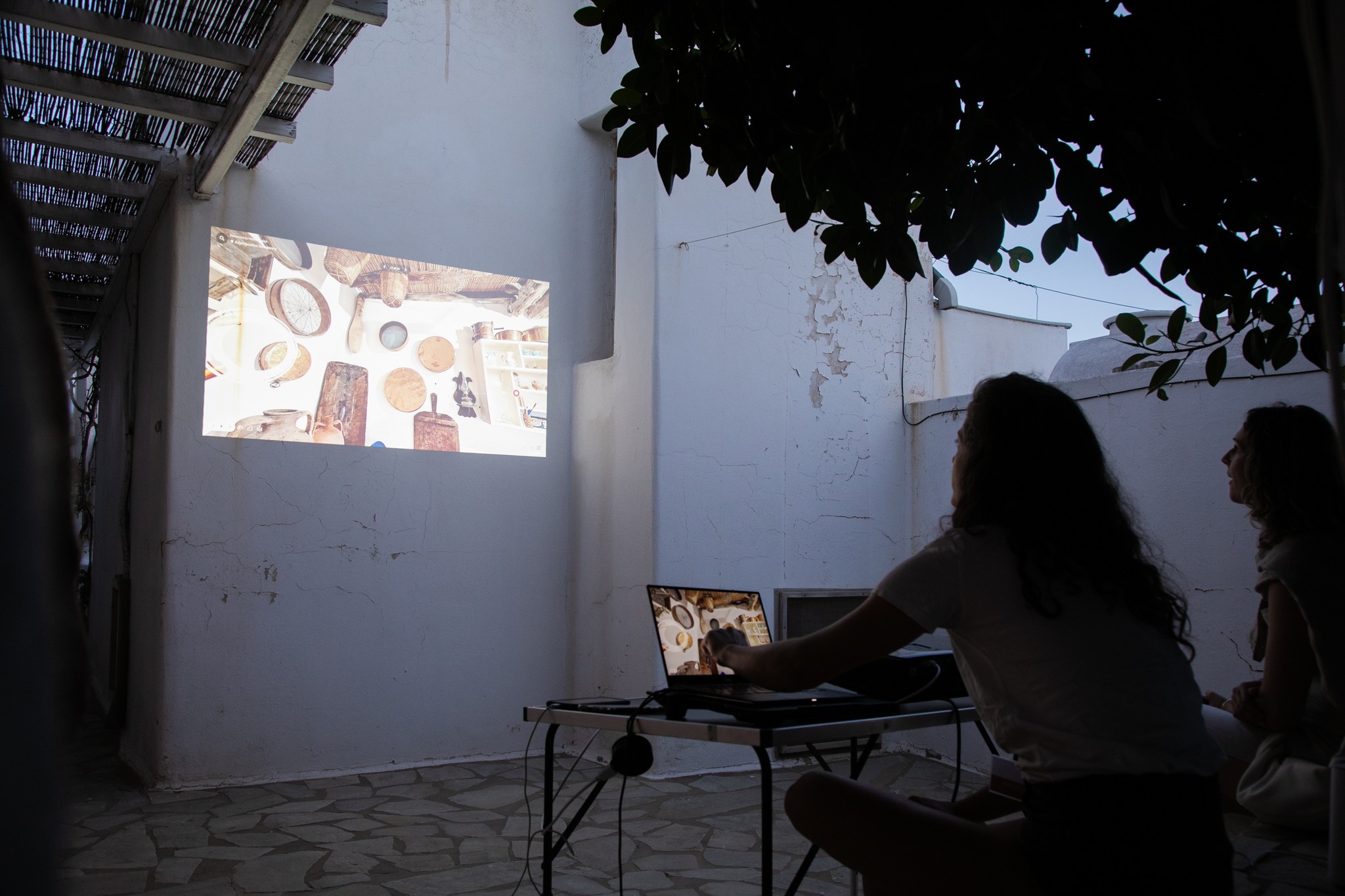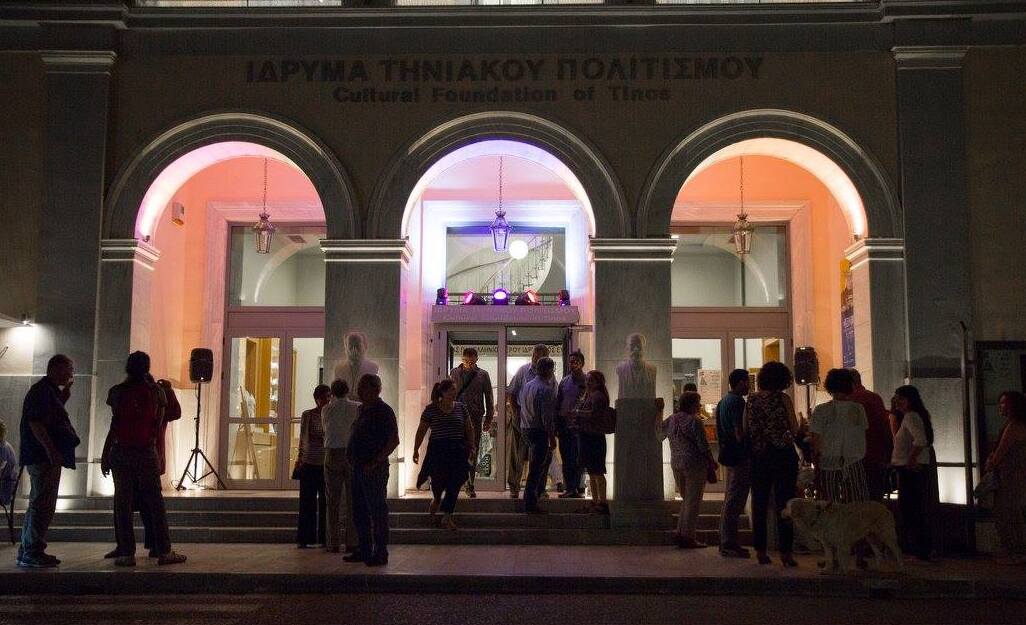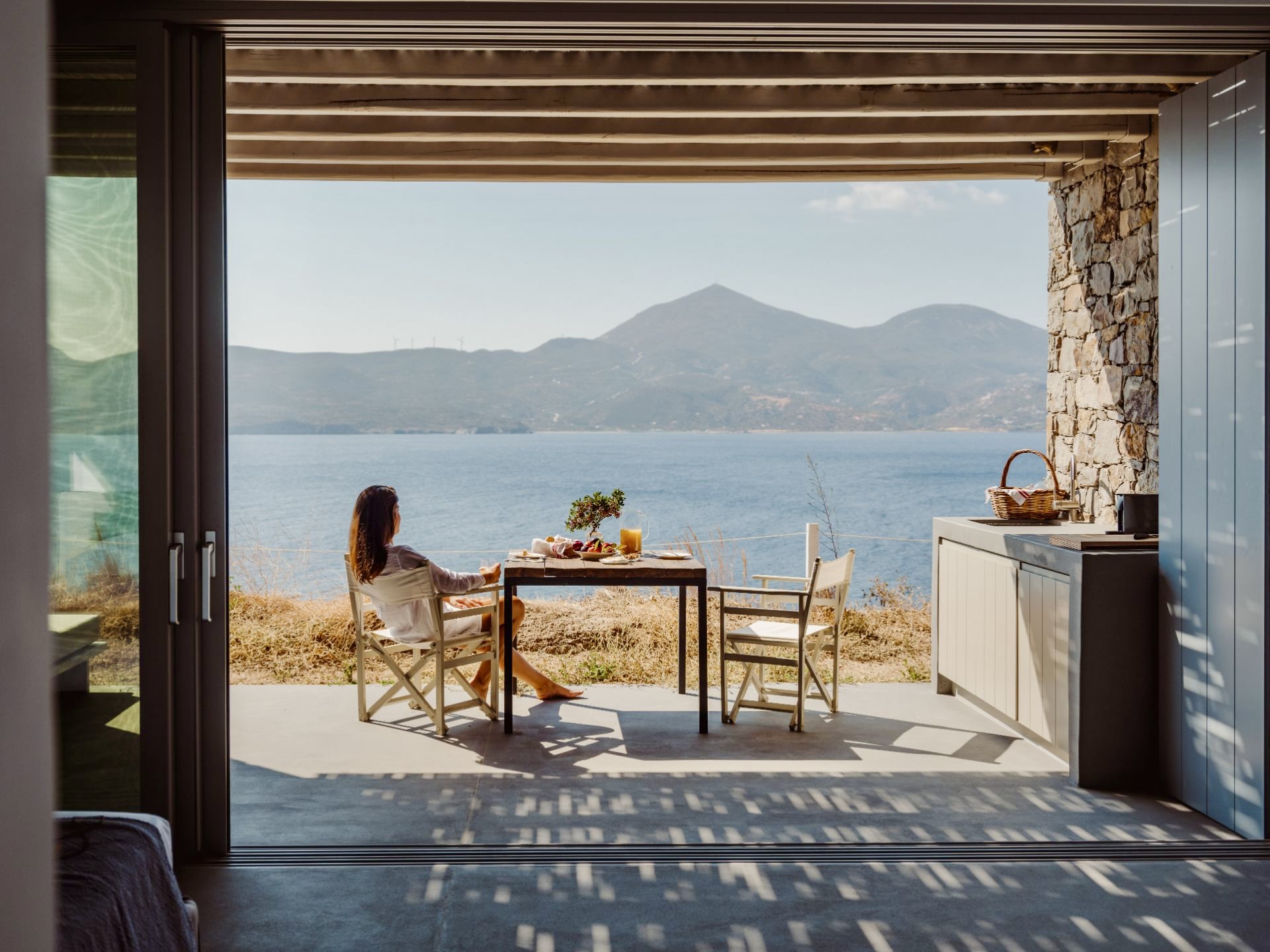There’s a particular kind of exhileration that grips you in the Cyclades during the summer. The kind that smells of sun-blasted figs, reviving sea spritzes and grilled octopus, echoes in the clink of glasses and vibrant conversations from twilight to the early hours and crunches aromatically underfoot along herb-strewn garden paths, or pours cooly over your entire being from head to foot as you plunge into the big blue.
These 220 sun-splashed islands generously, boldly, beautifully fill us with a remarkable mix of stark ancient clarity, modern contradiction, beauty, calm, frenzied festivities, fascinating traditional culture, dramatic rugged landscapes and unforgettable memories. Here’s what to love—and how to love it properly.
01
What the Cyclades Are Really Made Of
Let’s start with the way the Cyclades look, something that is recognized and loved throughout the world. You might think all those charming white houses and blue domes were created for paintings and posctards, but they weren’t. In fact everything you see built in often rugged, sun-blasted or salt-bitten Cycladic settlements were developed out of need. The whitewashed homes, blue shutters, domed chapels, and stone terraces that now define the islands were originally shaped by environment, economy, and resourcefulness.
Whitewash wasn’t a style choice—it was a practical one. The lime disinfected, reflected heat, and was affordable. Designs hand-painted onto steps and thresholds—swirls, diamonds, and flower shapes—offered both decoration and a way to mark space during festivals and feast days. On islands like Paros, Mykonos, and Naxos, they’re still redrawn each spring.
Blue became the dominant trim color because it was cheap, insect-repelling, and easy to produce from local pigments. Together with white, it made homes more visible in fog and reflected the tones of the surrounding sky and sea.
Stone walls lace the hillsides of Tinos, Andros, and Sifnos, terracing steep terrain and helping with water retention. Narrow alleys in Choras across Folegandros, Serifos, and Ios cut wind and create shade.
Domed church roofs, common on Amorgos, Ios, and Santorini, aren’t just aesthetic—they manage seismic pressure and trap cooler air. Many are built on older sacred sites and hold layers of local history in their construction.
Tinos and Andros are known for dovecotes—multi-level stone towers carved with patterned vents, originally built by Venetian settlers to farm pigeons. Some islands have hundreds, still in use today.
Meanwhilt, Santorini’s cave houses, dug into volcanic pumice, maintain steady temperatures year-round and face west to capture the sunset. In Milos, fishermen’s homes known as syrmata are cut into rock at sea level, with brightly painted boat garages below living quarters.
02
Where There Is Light
Cycladic light doesn’t offer comfort or glamour. It reveals. Painter Nikos Hadjikyriakos‑Ghika distilled the landscape into “simple geometric shapes and interlocking planes,” driven by the precision of Cycladic illumination. Poet Odysseas Elytis pointed to Aegean light as elemental—clear enough to expose physical and emotional architecture.
Ancient observers admired Parian marble for precisely the same reason: its reflectivity and clarity in sunlight made it the material of choice for sculptors. Clarity has always defined the light here—it’s why every inclining island façade, every sculpted doorframe seems carved by the sun itself.
Late afternoon brings the so‑called golden hour. The sun’s low angle softens direct glare, deepens color saturation, and draws out long, deliberate shadows while bathing everything in warm light. On Paros—especially in Naoussa Bay and Lefkes—the transition runs fast and clean across marble, sea, and sky, making architecture and geology look cut from the same stone. Serifos responds with flash and contrast—the ochre hillside, domes, and stone paths sharpen into geometry.
Delos stands apart. Its ruins don’t merely reflect light; they store it. At any hour—from dawn through dusk—the ancient temples, fragmented lions, and broken columns reveal new geometry. Light here does not romanticize. It decides what remains visible, what disappears.
On Naxos, the beams filter through olive branches, land on marble steps, and shift with dust—light that moves and ages rather than burns. In Folegandros and Anafi, the sun lingers longer along Chora clifftops. The final glow doesn’t just fade—it withdraws, line by line, until only shape remains.
03
Open-Air Cinema as Ritual
Summer evenings across the Cyclades bring film to unexpected corners: courtyards, parks, village squares, even remote shores—always chosen with an eye for charm and light.
On Kimolos, Cine Kalisperitis open air screenings are organized by Kimolistes a volunteer group that transforms village squares, rocky hillsides, and even beaches into cinema spaces. Screenings are spontaneous and beautifully low-tech—announced only if the wind cooperates, and always in breathtaking locations.
Milos hosts relaxed movie nights throughout the summer in outdoor spaces—some organized, others improvised. Locals bring chairs, something to sip, and settle in as the film glows against old walls and bougainvillea.
Andros keeps cinema alive in Chora with Cine Avli, a leafy outdoor theater showing a curated mix of Greek films, arthouse features, and family favorites throughout the season. Nearby, Cine Alex also screens films under the stars, offering a more casual setting where neighbors catch up before the opening credits roll.
Paros offers two distinct venues: Cine Rex in Parikia, a long-established classic, and Cine Enastron, set in the natural amphitheater of Paros Park—where films play against a backdrop of sea and sky.
In Mykonos, Cine Manto is tucked inside a shaded municipal garden in Chora, surrounded by pines and palms. The atmosphere is laid-back and welcoming, a quiet antidote to the island’s louder pleasures.
Tinos keeps its cinematic tradition going with Cinema Amore in Chora, and summer screenings often appear in villages like Pyrgos or Isternia during feast days and cultural events—casual, communal, and quietly joyful.
Syros remains the cultural capital, with the neoclassical Pallas Cinema in Ermoupoli operating year-round. In summer, open-air screenings extend to Summer Pallas in Ano Syros and nearby squares, bringing locals together for old films and new discoveries.
04
Beaches That Feel Like Discoveries
The Cyclades don’t give up their best beaches easily. They ask for something first—your patience, your sweat, your curiosity and your determination to meet them. But what you get in return is worth every sunburned step: silence, space, and water so clear it feels like a myth retold in turquoise.
On Folegandros, Katergo lies below a wall of rust-red cliffs, reachable only by boat or a steep footpath—raw, exposed, unforgettable. Amorgos hides Mouros, a pebbled cove with sea caves and dark rocks carved by time and salt. On Andros, Achla appears at the end of a bone-rattling dirt road, where peacocks sometimes wander and the river meets the sea.
Anafi is a revelation: Roukounas stretches wild and golden beneath the monastery cliffs, offering freedom and stillness that feel like exile in the best sense. Iraklia and Schinoussa have stunning beaches with no names, just shades of blue and the rustle of tamarisk trees.
On Naxos, Alyko is guarded by fragrant cedar forest and abandoned graffiti-covered buildings—surreal and soulful. Koufonisia’s Pori is the kind of place you walk to barefoot along dusty trails, stopping to swim in natural rock pools on the way. And in Milos, Tsigrado demands a vertical rope descent through volcanic rock, but delivers lunar sand, teal water, and a sense of having dropped into another world.
05
Late Hour Exploration for Sacred Stillness
Set off at sunset and aim to explore the moonlight-bathed landscapes, ready to ramble late into the night, to truly connect with the magic of these ancient islands. The evening, away from the crowds, reveals their true character—when shadows stretch long across stone and even the wind seems to hush. These are the hours to leave the village square, climb a hill, or follow a rocky path toward silence.
On Naxos, the ancient gateway of the Portara glows silver as the Aegean laps at its base—a front-row seat to the rising moon, framed by marble and myth. In Amorgos, the clifftop Monastery of Hozoviotissa becomes a luminous guardian above the sea, its white façade gleaming like bone under moonlight. Serifos offers high points near Chora where you can lie back and watch the stars unravel over stone terraces and wind-carved chapels.
In Sifnos, walking the old stone trails that link monasteries under moonlight is a rite of its own—cicadas fall quiet, and the scent of fig and thyme rises from the land. On Tinos, where over a thousand chapels stud the landscape, the rock of Exomvourgo gleams like a beacon, anchoring centuries of devotion in the dark.
Andros, wild and deeply green, rewards night wanderers with moonlit paths around Apikia and the hills above Panachrantou Monastery—where the breeze carries the scent of water and earth. On Anafi, untouched by tourism, the trail to the monastery of Panagia Kalamiotissa above the ruins of Apollo’s Temple offers a haunting, otherworldly view of the moon lifting over the cliffs, in silence so complete it feels ceremonial.
06
Unwritten Shopping Codes
Wander a little. Turn left instead of right. Some of the Cyclades’ most compelling shops don’t announce themselves—they hum quietly behind lime-washed doors and curtainless windows, open when the artisan feels like it.
In Tinos, Pyrgos and Isternia are still living sculpture villages, where marble is not just material but heritage. You’ll find carvers shaping icons, chessboards, and delicate mortars from slabs of glinting local stone—each piece echoing centuries of sacred craft. In Mykonos, past the fashion circus, a quieter design world thrives mainly in the Chora: boutiques offering raw silk kaftans stitched with traditional Cycladic patterns, handwoven basket bags, and one-of-a-kind jewelry pieces forged in brass, silver, or lava rock. Galleries in Mykonos town also carry bold contemporary Greek art and ceramics.
Santorini leans into its landscape—expect ceramics glazed in the colors of pumice and sea, abstract paintings inspired by the caldera, and volcanic stone jewelry cut into talismanic forms. In Oia and Fira, many boutiques carry pieces by Aegean-based designers—clothes in muted natural fibers, sculpture-light chandeliers, even perfumes mixed with wild fig and thyme. Syros has ateliers where notebooks are stitched by hand, leather sandals are still cut and nailed on the spot, and linen tailoring has a whiff of neoclassical elegance. In Naxos, you’ll come across small apothecaries bottling sage, mint, and citron into oils, balms, and bitters, while Amorgos sells beautiful andwoven textiles—scarves, towels, shawls—still made on looms passed down through generations.
07
Island-Hopping Like a Local
The sea is the highway here. Ferries, catamarans, caiques—they’re part of daily life, not just logistics. Learn their rhythm, and you unlock a whole new kind of travel: unhurried, unfiltered, salt-smeared. The Small Cyclades loop—linking Naxos, Koufonisia, Schinoussa, and Donoussa—moves at the pace of deep breaths and sun-warmed limbs. It’s the kind of itinerary where you can dive off the dock in the morning, eat grilled fish with your feet in the sand by lunch, and arrive on a new island just in time for sunset.
Locals take the sea like city folk take the metro—Syros to Tinos for a name day, Paros to Antiparos for an afternoon swim and a gossip session. On certain routes, especially from Naxos or Amorgos, the ferry becomes a floating town square—grocers with crates of peaches, priests, teenagers on summer break, panting dogs sprawled under plastic chairs.
08
Summer Feasts That Last All Night
In the Cyclades, panigiria are age-old, soul-deep rituals of music, meze, and communal joy, honoring saints and seasons in chapels tucked into hillsides and coastal coves. These celebrations begin with solemn liturgies and slip seamlessly into feasting and dancing under the stars.
August 15th lights up Naxos and Paros with music-filled vigils in villages like Filoti and Lefkes. But Tinos is a panigiri powerhouse all summer, especially in villages like Kardiani, Isternia, and Agapi, where you’ll find local bands playing island folk, women serving handmade sweets, and families dancing barefoot well past midnight. On Amorgos, Agia Paraskevi (July 25–26) calls the whole island south for two days of communal feasting. Ios celebrates Prophet Elias in mid-July with a clifftop hike, and in Sifnos, revithada pots appear after every saint’s feast.
09
Wind That Rocks Your World
Ah, the Meltemi. They call it a wind but it’s way more than that. It’s a character, a force of nature to be reckoned with. It has a wicked sense of humor and a deep, rumbling presence. It’s the reason your hat ends up in the Aegean and your shutters sound like they’re trying to break loose. You don’t fight the Meltemi; you surrender to it. You watch the windsurfers on Andros, tiny human specks of defiance, flying across the golden water. You feel it on your skin, that raw, exhilarating rasp that scrapes away the humid laziness of a summer day with blasts of sand and leaves you feeling utterly maddened. I
On Paros, it charges Golden Beach with windsurfers. Andros sees kites and sailboards skimming the waves at Kypri and Ormos. Over on Tinos, the north coast delivers everything: Megali and Mikri Kolymbithra are first on the wave’s wish list, offering surf lessons or calm swims depending on the breeze. Livada and the southern beaches—Agios Fokas, Kionia, Agios Romanos, Pachia Ammos—shape up for windsurfers and kiteboarders when the Meltemi peaks. It’s the same backdrop, but the experience shifts: more spray, sharper lines, clearer skies.
Elsewhere, Mykonos feels the arrows through its alleyways. The wind snaps shutters, dries laundry in minutes, delays ferries. Locals adapt: seekers of calm head for sheltered coves. So should you, unless you’re such soul mates with it you are prepared to accept it fully.
10
Timelessness Beating to a Modern Drum
The Cyclades are layered, like sediment: ancient temples half-buried in vineyards, marble lions lounging near graffiti, barefoot DJs mixing under Venetian arches.
In Syros, neoclassical mansions and underground clubs exist within blocks of each other, and crowds gather annually for its International Film Festival.
In Paros, the annual festival of “Routes in Marpissa” blends folklore, performance, and storytelling over three sultry nights.
Tinos hosts the World Music Festival. Andros hosts an annual exhibition of globally prominent art at its Museum of Contemporary Art.
Ios, a rising wave of creative souls repurpose farmhouses as art studios and dance halls. You don’t come here to escape. You come to remember. To see what survives, and to discover what you might, too.
On Naxos, the Axia Music Festival brings live classical and world music performances to the village square of Halki each August. Discover many more festivals on Naxos here.
Serifos hosts the Serifos Festival, with concerts, plays, and contemporary dance set against the island’s rugged terrain.
In Sifnos, the Cycladic Gastronomy Festival “Nikolaos Tselementes” fills the village of Artemonas each September with regional food, music, and open-air cooking.
Amorgos has gained cultural weight with its International Short Film Festival, showcasing travel and documentary films alongside filmmaker talks.
And on Milos, several festivals span two months of music, visual art, and theater, with events held in the island’s villages and historic sites.



